K.M. Weiland's Blog, page 25
April 19, 2021
Archetypal Character Arcs, Pt. 11: The Queen’s Shadow Archetypes
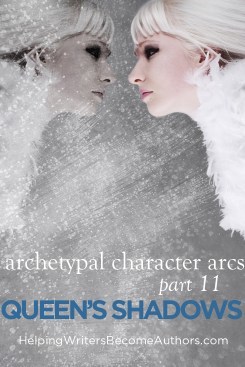 A character who makes it through the Hero Arc is a character who has graduated into a brave new world—the Second Act of the life cycle of archetypal character arcs. This section of life, which deals with questions of relationship and power, begins with the first of the “mature” arcs—that of the Queen. But like all positive archetypes, the Queen’s potential for further transformation is “shadowed” by the possibility of her slipping instead into either of two counter-archetypes—the Snow Queen and the Sorceress. The Snow Queen represents the passive polarity within the Queen’s shadow; the Sorceress represents the aggressive polarity.
A character who makes it through the Hero Arc is a character who has graduated into a brave new world—the Second Act of the life cycle of archetypal character arcs. This section of life, which deals with questions of relationship and power, begins with the first of the “mature” arcs—that of the Queen. But like all positive archetypes, the Queen’s potential for further transformation is “shadowed” by the possibility of her slipping instead into either of two counter-archetypes—the Snow Queen and the Sorceress. The Snow Queen represents the passive polarity within the Queen’s shadow; the Sorceress represents the aggressive polarity.
As with all of the positive archetypes, the Queen’s journey is characterized not just by the external antagonists she faces in bringing order to her Kingdom, but just as much by her personal inner struggle against the lure of her own shadow archetypes.
Instead of rising up to protect her family (whether literal or symbolic), she may “freeze” into the selfish and numb passivity of the Snow Queen—someone who cannot muster the courage and strength to protect those she loves, largely because she has not properly learned the lessons of the First Act in gaining the ability to protect and care for herself.
It is also possible the Queen may instead succumb to the alluring but false power of her aggressive form—the Sorceress. In so doing, she forfeits her true responsibility to become a selfless leader of those she loves, instead even vampirically manipulating those in her charge in order to meet her own needs.
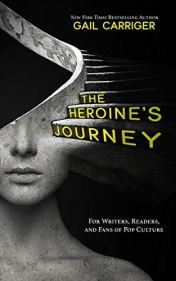
The Heroine’s Journey by Gail Carringer (affiliate link)
By the time we reach the archetypal character arcs of the Second Act, we often start seeing some familiar faces from the previous arcs showing up in supporting roles. Here, it’s the Maiden and the Hero. And not surprisingly, the negative forms of the Queen (and all later archetypes) are almost inevitably the villains in the younger arcs. The Snow Queen and (particularly) the Sorceress most frequently turn up in the Maiden Arc—symbolically representing the Too-Good Mother or Devouring Mother or Evil Step-Mother from which the young person must individuate. In delineating “villainous” Queens, Gail Carringer makes special note, in her book The Heroine’s Journey, about the Queen archetype’s inherent relationship to “network-building”:
If she builds networks, only to sever them at the tiniest hint of betrayal, she’s a great villain. If she sees her power in ruling over others and telling them what to do, or manipulating them into it, rather than asking them because she understands their strengths and delegates accordingly—she’s a villain.
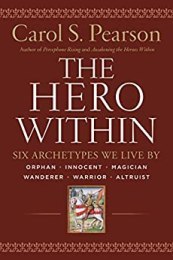
The Hero Within by Carol S. Pearson (affiliate link)
These negative counter-archetypes stand in stark contrast to the nurturing and growth-encouraging potential of a true Queen—who overcomes her own insecurities in order to foster the growth arcs of her young wards. Part of the Queen’s struggle is simply to understand the negative potential within her own arc, by recognizing the signs of the Snow Queen and Sorceress. In The Hero Within, Carol S. Pearson notes:
Understanding archetypes and their positive manifestations operates as a kind of psychological inoculation against their sides (which are often called shadow sides); by being exposed to archetypes and becoming aware of how they operate in us, we can learn to balance, and sometimes even supplant, their more negative aspects. Anything we repress, including archetypes, forms a shadow that can possess us in its negative or even demonic form. Freedom comes with consciousness.
Once again with our series-wide reminder: The arcs and their related archetypes are alternately characterized as feminine and masculine. This is primarily indicating the ebb and flow between integration and individuation, among other qualities. Together all six primary life arcs create a progression that can be found in any human life (provided we complete our early arcs in order to reach the later arcs with a proper foundation). In short, although I will use feminine pronouns in relation to the feminine arcs and masculine pronouns in relation to the masculine arcs, archetypal representations within these journeys can be of any gender.
The Snow Queen: A Passive Refusal to Fight for What She Loves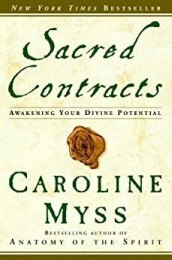
Sacred Contracts by Caroline Myss (affiliate link)
The Snow Queen is one of the saddest archetypes. She is still relatively young, still in the first half of her life. But life itself seems to already have left her. She moves through life as if through a fog. Caroline Myss, in Sacred Contracts, notes that the Snow Queen is not the only one who suffers as a result:
The Ice Queen rules with a cold indifference to the genuine needs of others—whether material or emotional.
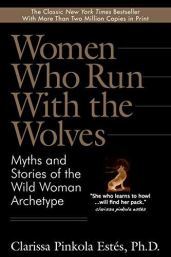
Women Who Run With the Wolves by Clarissa Pinkola Estes (affiliate link)
The chronology of her life has inevitably pushed her along life’s path to some practical degree. She’s not a Damsel any longer, living with her parents. She has perhaps even sketched what looks, on the outside, to be a Hero Arc. The difference here between someone who has truly completed the Hero Arc by individuating into a mature adult versus someone who is “only acting the part” may be largely internal. Usually, it has to do almost entirely with whether or not the character took the true Quest her heart called her to take—or whether she simply took the passive road—the Coward‘s road—by sleepwalking down the path laid out before her by others. Or as Clarissa Pinkola Estés says in Women Who Run With the Wolves:
Some women … give up their life’s dream [and] surrender their true calling in order to lead what they hope will be a more acceptable, fulfilling, and more sanitary life.
She is now at the stage of her life when she expected to be “grown up.” As an adult, she is responsible to other people and specifically to the younger people who are rising up behind her. But she not only has little to give, since she has not properly completed her own initiations, but in her heart of hearts she is still that fair Damsel desiring to be taken care of.
As with all the passive polarities, she is governed by Fear. What she is most afraid of is Love. However much she may crave it, she can never let it fully in because it demands too much—too much maturity, too much responsibility, too much reality.
And so when the threat comes to her Kingdom and her family, she is unequipped to rise to its challenges. At best, she categorizes herself with her children, begging that she too should be saved and taken care of by someone else. At worst, she simply lets the Invaders steal away her children in the hope that at least she might be left in peace.
The Snow Queen’s Potential Arcs: Positive and NegativeThe Snow (or Ice) Queen of fairy and folk tale is often portrayed as a beautiful woman living alone in a palace of ice—who must be rescued (often by children or a young Hero) who warm her frozen heart with the revelation of Love. Estés speaks of forgiveness:
Forgiveness…. does not mean giving up one’s protection, but one’s coldness. One deep form of forgiveness is to cease excluding the other, which includes ceasing to stiff-arm, ignore, act coldly toward, patronizing and phony. It is better for the soul-psyche to closely limit time with people who are difficult for you than to act like an unfeeling manikin.
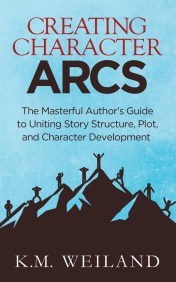
Creating Character Arcs (Amazon affiliate link)
Right there, we can see the deep and beautiful potential within the Snow Queen for a positive arc into a true Queen. The lesson she missed in failing to complete the previous Hero Arc was, in a word, Love. Before she can go on to claim the ruling principle of the true Queen—i.e, Order—she must first be thawed by that Love.
As indicated in the old tales, she may be saved from herself by her own children, who she then will save from the larger threats against the Kingdom. Or she may be saved by the Love of a questing Hero who, within his own arc, submits his power to her as the thing in his life he is finally willing to fight and die for.
But, of course, the Snow Queen may also remain inured within her passivity, and her story may spiral into deep tragedy as her children, or whoever she is responsible for, are plunged into their own tragedies (or at least difficulties) through her lack of responsibility. Whether through the depredations of Invaders or because her family grows up enough to “move on,” the end of her story will find her all alone.
Worse still, she may summon the energy to rise out of her passivity only to hurtle into the full-on destructive manipulation of her aggressive polarity—the Sorceress.
The Sorceress: An Aggressive Refusal to Do What Is Best for What She LovesIn the Snow Queen, we find the shadow archetype of someone who, even in mid-life, has not yet found a true and nourishing flow of Love. We see this same core problem in the Sorceress, but unlike her passive partner, the Sorceress is at least trying to take control of her situation and get her needs met—however misguidedly.
In the article “How Not to Fall in Love with the Anima/Animus,” Sinéad Donohoe makes an interesting note that can be seen to apply to this particular shadow archetype:
As she appears in myth, the temptress is the damsel whose cries for rescue went unheeded, and who has been allowed to perish.
The Sorceress is the Vixen who wasn’t given the support and resources she needed to healthily individuate from her birth family, just as she is also the Bully who used whatever power was available to meet personal needs. Now, in the Second Act of her life cycle, she finally has some freedom from and power over others. But because of her fundamental feeling of lack and her distrust of true Love, she uses any and all means at her disposal to meet her needs by securing resources from others. By this point, many of the people she manipulates are those who are more vulnerable than she is and for whom she herself is now responsible in some way.
In reference to the shadow form of what she calls “the Altruist,” Pearson offers some examples of how this Sorceress energy can manifest in recognizable modern situations:
[People in the shadow form of] the Altruist … will be unable—no matter how hard they work at it—to sacrifice truly out of love and care for others, and their sacrifice will not be transformative. If they sacrifice for their children, the children must then pay and pay and pay—by being appropriately grateful, by living the life the parents wish they had lived, in short, by sacrificing their own lives in return. It is this pseudo-sacrifice, which really is a form of manipulation, that has given sacrifice a bad name.
Virtually everyone these days seems to understand how manipulative the sacrificing mother can be, but another, equally pernicious version is the man who works at a job he hates, says he does it for his wife and children, and then makes them pay by deferring to him, protecting him from criticism or anger, and making him feel safe and secure in his castle. Such a man nearly always requires his wife to sacrifice her own journey in his drama of martyrdom. In these two cases and in others, the underlying message is: “I’ve sacrificed for you, so don’t leave me; stay with me, feed my illusions, help me feel safe and secure.
However unconsciously, the Sorceress preys upon her dependents while they are young and then tries to trap them in a perpetual dependence on her by preventing them from taking their own individuating arcs of Maiden and Hero.
The Sorceress’s Potential Arcs: Positive and NegativeThe deeper a character gets into the life arcs’ shadow archetypes, the harder it can be to pull free. But redemption is always possible (although it can mean reverting to previous positive arcs that were never properly completed).
Like all the aggressive polarities, the Sorceress’s deep pit of problems offers the opportunity for huge positive arcs. If she can somehow find the courage to recognize, acknowledge, and address her own deeply entrenched negative patterns, she may yet find the strength to rise into the true Queen Arc of responsible leadership. This can be the powerful midlife story of someone who has followed the company line all her life, to her own detriment, only to realize she’s living someone else’s life. She chucks it all out the window and finally takes off on the Hero’s Quest she should have taken many years ago.
But she may also fail to break her own destructive patterns. She may remain a Sorceress—an antagonist to other people’s own growth arcs—or she may devolve further into a full-blown despot. By “upping” her power from mere manipulation to full-on oppression, she can take a shadow version of the Queen Arc and end up, not a responsible and loving King, but a hideous and death-dealing Tyrant.
Key Points of the Queen’s Shadow ArchetypesFor easy reference and comparison, I will be sharing some scannable summations of each arc’s key points:
Passive Shadow Archetype: Snow Queen is Defensive (to protect from consequences of Love)
Aggressive Shadow Archetype: Sorceress is Manipulative/Vampiric (aggressive use of Love)
Positive Queen Arc: Protector to Leader (moves from Domestic World to Monarchic World)
Queen’s Story: A Battle.
Queen’s Symbolic Setting: Kingdom
Queen’s Lie vs. Truth: Control vs. Leadership
“Only my loving control can protect those I love.” versus “Only wise leadership and trust in those I love can protect them and allow us all to grow.”
Queen’s Initial Motto: “We, the True Believers.”
Queen’s Archetypal Antagonist: Invader
Queen ’ s Relationship to Own Negative Shadow Archetypes:
Either Snow Queen finally acts in Love for her children by accepting Responsibility.
Or Sorceress learns to submit her selfish Love to the greater love of Responsibility.
Examples of Snow Queen and Sorceress ArchetypesExamples of the Snow Queen and Sorceress archetypes include the following. Click on the links for structural analyses.
Snow Queen
Lady Dedlock in Bleak HouseMary Crawley in Downton Abbey (she also displays Bully qualities, as noted last week, but she exhibits more of the Snow Queen as she gets older)Jon Snow in Game of Thrones (he eventually overcomes his Snow Queen tendencies to become a true leader)Blanche DuBois in A Streetcar Named DesireMr. Darcy in Pride & PrejudiceSorceress
Tai-Lung in Kung-Fu Panda Loki in Thor Scarlett O’Hara in Gone With the Wind Joan Crawford in Mommie DearestCommodus in Gladiator Mrs. Elton in EmmaCersei Lannister in Game of ThronesRodmilla de Ghent (Evil Step-Mother) in Ever AfterStay Tuned: Next week, we will study the shadow archetypes of the King: the Puppet and the Tyrant.
Related Posts:
Story Theory and the Quest for MeaningAn Introduction to Archetypal StoriesArchetypal Character Arcs: A New SeriesThe Maiden ArcThe Hero ArcThe Queen ArcThe King ArcThe Crone ArcThe Mage ArcIntroduction to the 12 Negative ArchetypesThe Maiden’s Shadow ArchetypesThe Hero’s Shadow ArchetypesWordplayers, tell me your opinions! Can you think of any further examples of stories that feature either the Snow Queen or the Sorceress? Tell me in the comments!Click the “Play” button to Listen to Audio Version (or subscribe to the Helping Writers Become Authors podcast in Apple Podcast or Amazon Music).
___
Love Helping Writers Become Authors? You can now become a patron. (Huge thanks to those of you who are already part of my Patreon family!)The post Archetypal Character Arcs, Pt. 11: The Queen’s Shadow Archetypes appeared first on Helping Writers Become Authors.
April 12, 2021
Archetypal Character Arcs, Pt. 10: The Hero’s Shadow Archetypes
 Here in the 21st Century, we often have a confused relationship with the Hero archetype. On the one hand, he is everywhere and we love him and resonate with him. On the other hand, his sheer omnipresence has inevitably highlighted his negative counter-archetypes in almost equal force. This is because wherever we find a would-be Hero, we also find the potential for his regression into the Coward and the Bully.
Here in the 21st Century, we often have a confused relationship with the Hero archetype. On the one hand, he is everywhere and we love him and resonate with him. On the other hand, his sheer omnipresence has inevitably highlighted his negative counter-archetypes in almost equal force. This is because wherever we find a would-be Hero, we also find the potential for his regression into the Coward and the Bully.
This is not because the Hero is any more flawed than any of the other primary archetypal character arcs. As we’ve seen, every positive archetype is partnered with a polarity of passive/aggressive shadow archetypes. But the Hero’s negative archetypes are particularly interesting (and cautionary) simply because of the profound and implicit pervasiveness of the Hero’s Journey in the literature and film of the last century. We are perhaps more apt to recognize the problems inherent within the Hero Arc simply because those problems are often the very ones that stymie us personally and culturally.
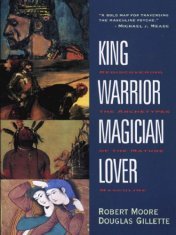
King, Warrior, Magician, Lover by Robert Moore and Douglas Gillette (affiliate link)
In their classic examination of masculine archetypes, King, Warrior, Magician, Lover, Robert Moore and Douglas Gillette point out the inherent, if comparative, immaturity found within the Hero Arc:
There is much confusion about the archetype of the Hero. It is generally assumed that the heroic approach to life, or to a task, is the noblest, but this is only partly true. The Hero is, in fact, only an advanced form of Boy psychology—the most advanced form, the peak, actually, of the masculine energies of the boy, the archetype that characterizes the best in the adolescent stage of development. Yet it is immature, and when it is carried over into adulthood as the governing archetype, it blocks men from full maturity.
As we’ve already explored in the post on the Hero Arc, this archetype is only the second in a cycle of six. It is the final journey of the “youthful” stage of life, which may be thought of as life’s First Act. The arc itself is fundamentally about growing up in the fullest sense—not just individuating (which should be accomplished within the preceding Maiden Arc), but responsibly reintegrating into society as a full-fledged adult.
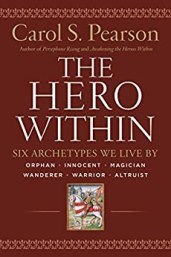
The Hero Within by Carol S. Pearson (affiliate link)
It is an arc that comes for us all at some point—but one that, despite its prevalence, is misunderstood by modern society simply because we do not understand what comes next (i.e., the mature “adult” arcs of Queen and King). As Carol S. Pearson notes in The Hero Within, this is important beyond just character arcs and literature:
When the heroic journey was thought to be for special people only, the rest of us just found a secure niche and stayed there. Now we have no secure places in which to hide and be safe. In the contemporary world, if we do not choose to step out on our quest, it will come to get us. We are being thrust on the journey. That is why we all must learn its requirements.
If, however, the Hero fails to complete his transformation into the mature arcs of life’s Second Act, he is very likely to instead transition sideways into his negative shadow archetypes—the Coward and the Bully. The Coward represents the passive polarity within the Hero’s shadow, the Bully the aggressive polarity.
Once again with our series-wide reminder: The arcs and their related archetypes are alternately characterized as feminine and masculine. This is primarily indicating the ebb and flow between integration and individuation, among other qualities. Together all six primary life arcs create a progression that can be found in any human life (provided we complete our early arcs in order to reach the later arcs with a proper foundation). In short, although I use feminine pronouns in relation to the feminine arcs and masculine pronouns in relation to the masculine arcs, archetypal representations within these journeys can be of any gender.
The Coward: A Passive Refusal to Take ResponsibilityAs with all of the passive counter-archetypes, we find the presence of the Coward implicit within the beginning of the Hero Arc. However much the Hero may long for adventure in “the great wide somewhere,” he is not about to unequivocally volunteer. In the very beginning of his journey, he will display his immaturity in his laziness, complacency, or even outright cowardice.
Like Luke Skywalker at the beginning of his journey, he may whine and gripe a bit about his meaningless life in the middle of nowhere, but he won’t summon the courage to leave it until the Call to Adventure arrives (and even then he starts out at least symbolically refusing it).

There are good reasons for this. However much humans may need to grow and mature, our entire concept of survival is built around maintaining a status quo. This is why the Inciting Event and First Plot Point in a story, which force the Hero out of his Normal World, are inevitably “bolts from the blue”—signifying the arrival of conflict from outside the Hero’s safe world. Pearson says:
…although some people take off on the quest with a high sense of adventure, many experience it as thrust upon them by their feeling of alienation or claustrophobia, by the death of a loved one, or by abandonment or betrayal.

The Hero With a Thousand Faces Joseph Campbell (affiliate link)
This is normal—indeed, archetypal. Part of the Hero Arc lies within the Hero’s own inner struggle against the Coward. But the Coward begins to prevail if the Hero’s initial Refusal of the Call is not quickly overcome. In The Hero With a Thousand Faces, Joseph Campbell notes, rather dourly:
Often in actual life, and not infrequently in the myths and popular tales, we encounter the dull case of the call [to adventure] unanswered; for it is always possible to turn the ear to other interests. Walled in by boredom, hard work, or “culture,” the subject loses the power of significant affirmative action and becomes a victim to be saved…. The myths and folk tales of the whole world make clear that the refusal is essentially a refusal to give up what one takes to be one’s own interest. The future is regarded not in terms of an unremitting series of deaths and births, but as though one’s present system of ideals, virtues, goals, and advantages were to be fixed and made secure.
Like the Damsel before him, the Coward often hides behind a guise of seeming wisdom and maturity. Why take risks? Why not let others endanger themselves for the good of all? After all, somebody has to stay behind and take care of things. But this is false maturity. Once the Call arrives (whatever its form—mythic or modern), it is not the Hero’s role to hold the fort. That task belongs to others—the Queen and the King. If he chooses to ignore this, he is doing it for selfish reasons and not for the good of his community—and, ironically, as Pearson points out, he will eventually suffer for it just as much as if he had risked all:
The Coward’s Potential Arcs: Positive and NegativeMany people subscribe to the false idea that being heroic means you have to suffer and struggle to prevail. The fact is, most of us will experience difficulty whether or not we claim the heroic potential within us. Moreover, if we avoid our journeys, we also may feel bored and empty.
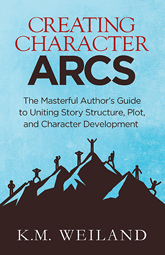
Creating Character Arcs (Amazon affiliate link)
As noted, the Coward is already a kernel waiting to sprout within the Hero Arc. In many ways the beliefs of the Coward comprise the Lie the Hero Believes—and which the Hero will overcome within a Positive-Change Arc.
It should be noted his cowardice may also be projected outward and represented by supporting characters. Allowing supporting characters to “act out” parts of the protagonist’s inner self is also a deeply powerful thematic presentation. We can see this in such stories as Harry Potter, in which Harry’s lovable best friend Ron Weasley usually represents the Coward—even though he inevitably redeems himself at the end of every installment within the series.

In Star Wars, the Coward can be seen to be represented by Threepio, who is always the “voice of caution.” Often, but not always, this iteration of the Coward aligns with what, in the Dramatica system, is termed the Reason character.

If the Coward does not summon enough courage to embrace his journey (whether at the very beginning of the story or later after he has been thrust upon it against his will), he will fall prey to one of two possible fates.
He might cling ever tighter to his fear and immaturity, which will cause him to stultify his growth. Even if life’s chronology pushes him ahead into later forms of adulthood and elderhood, he will remain frozen in the passive archetypes—Snow Queen, Puppet, Hermit, and Miser.
The second possibility is that he will pluck up his resolve enough to face his challenges head-on. In so doing, he will discover that he does, in fact, possess more personal power than he realized. But, again, his forward progression stalls. Instead of using this power to arc into the love and social responsibility of a full-blown Hero, he will instead use this power selfishly (and ultimately still from a place of fear) by turning into the Bully.
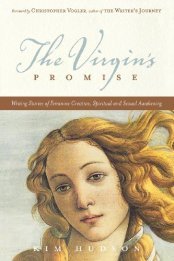
The Virgin’s Promise by Kim Hudson (affiliate link)
In The Virgin’s Promise, Kim Hudson talks about the underlying truths that join both of the potentially negative archetypal polarities of the Hero:
The Bully: An Aggressive Refusal to Take ResponsibilityThe choice of Coward emphasizes the unspoken quality of courage in the term Hero, and points out a deep and consistent truth about Villains and Shadow figures—they are cowards, choosing a selfish and greedy path rather than the heroic path of self-sacrifice for the greater good.
At first glance, the Bully can seem powerful—more powerful even than the true Hero. But like all aggressive polarities within the shadow archetypes, his power contains an inherent weakness. It is “stuck”—brittle—instead of free-flowing and transformative like the Hero’s.
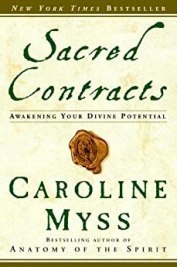
Sacred Contracts by Caroline Myss (affiliate link)
In many ways, the Bully is the true shadow form of the Hero, as called out by Caroline Myss in Sacred Contracts:
From a shadow perspective, the Hero can become empowered through the disempowerment of others.
Unlike the Coward, the Bully may well have at least gotten a “passing grade” on individuating from his authority figures, in the previous arc. But he has not only stalled out in re-integrating into society in a healthy and responsible way, he has in fact blocked himself (and/or been obstructed by equally regressive social influences) from doing so. If the Hero is about arcing into Love, the Bully is ultimately an archetype stuck in hatred. Deep down, he has embraced a societal wound in a way that not only prevents his healing and growth, but also causes him to fear and resent the idea of reintegrating into a larger community.
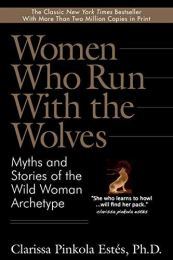
Women Who Run With the Wolves by Clarissa Pinkola Estes (affiliate link)
And so, even if he surrounds himself with “minions,” he stands apart from the cycle of life. Like all aggressive archetypes, he avoids the painful challenges of true growth and instead tries to control reality. As so often happens in cycles of abuse, he becomes the very thing he himself fears and hates. In Women Who Run With the Wolves, Clarissa Pinkola Estés speaks a familiar truth:
The Bully’s Potential Arcs: Positive and NegativeMost often we wound others where, or very close to where, we have been wounded ourselves.
But there is always hope. As with all of the shadow archetypes, the Bully is not inevitably lost. Indeed, his retained flicker of inherent personal power—and his refusal to completely surrender it—signals the potential for positive transformation, as Myss (who is always quick to examine the “positive” side of the negative archetypes and vice versa) points out:
The archetype of the Bully manifests the core truth that the spirit is always stronger than the body.
Indeed, any ultimately positive Hero Arc may start out emphasizing the Bully side of the character’s polarity. Although this can present challenges for the author (and the readers), since the Bully is often unlikable as a character, it does offer the opportunity for a deep arc, along the lines of what Moore and Gillette eulogize:
The “death” of the Hero is the “death” of boyhood, of Boy psychology. And it is the birth of manhood and Man psychology. The “death” of the Hero in the life of a boy (or a man) really means that he has finally encountered his limitations. He has met the enemy, and the enemy is himself. He has met his own dark side, his very unheroic side. He has fought the dragon and been burned by it; he has fought the revolution and drunk the dregs of his own inhumanity. He has overcome the Mother and then realized his incapacity to love the Princess. The “death” of the Hero signifies a boy’s or man’s encounter with true humility. It is the end of his heroic consciousness.
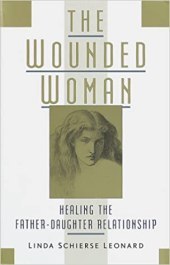
The Wounded Woman by Linda Schierse Leonard (affiliate link)
But, of course, the fight for his better self may not end triumphantly, and the Bully may instead arc more deeply into aggression by rejecting the assimilation of “Love” found at the end of a true Hero Arc. In The Wounded Woman, Linda Schierse Leonard speaks of the Bully archetype in terms of a woman’s psyche and inner destructive animus, but her words hold equally true for anyone:
It is then that the masculine becomes brute-like and sacrifices not only the outer woman but also its inner feminine side.
If the Bully is deeply wounded and defeated in the outer conflict, it is also possible he may lose his willpower and resolve, instead reverting to the passive Coward. Indeed, because the Coward’s fear (of life, love, and power) lie at the heart of the Bully, the Coward is always with him. But only if his aggressive actions in the exterior conflict prove personally destructive will he abandon them.
Key Points of the Hero’s Shadow ArchetypesFor easy reference and comparison, I will be sharing some scannable summations of each arc’s key points:
Passive Shadow Archetype: Coward is Ineffectual (to protect from consequences of Courage)
Aggressive Shadow Archetype: Bully is Destructive (aggressive use of Courage)
Positive Hero Arc: Individual to Protector
Hero’s Story: A Quest.
Hero’s Symbolic Setting: Village
Hero’s Lie vs. Truth: Complacency and/or Recklessness vs. Courage
“My actions are insignificant in the overall scope of the world.” versus “All my actions affect those I love.”
Hero’s Initial Motto: “I, the powerful.”
Hero’s Archetypal Antagonist: Dragon
Hero ’ s Relationship to Own Negative Shadow Archetypes:
Either Coward finally uses his Strength because he learns to Love and wants to defend what he loves.
Or Bully learns to submit his Strength to the service of Love.
Examples of the Coward and Bully ArchetypesExamples of the Coward and Bully archetypes include the following. Click on the links for available structural analyses.
Coward
Ron Weasley in Harry Potter The Narrator in Fight Club Cowardly Lion in The Wizard of OzThreepio in Star Wars Paris in Troy Edmund Sparkler in Little Dorrit Richard Carstone in Bleak HouseLambert in AlienBully
Thor Odinson in Thor John Bender in The Breakfast ClubEdmund Pevensie in The Lion, the Witch, and the Wardrobe Draco Malfoy in Harry Potter Tyler Durden in Fight Club Regina George in Mean GirlsBill Sikes in Oliver TwistFannie in Little Dorrit Herbert Sobel in Band of BrothersGaston in Beauty & the BeastSid Phillips in Toy Story Emily in The Devil Wears PradaMary Crawley in Downton AbbeyStay Tuned: Next week, we will study the shadow archetypes of the Queen: the Snow Queen and the Sorceress.
Related Posts:
Story Theory and the Quest for MeaningAn Introduction to Archetypal StoriesArchetypal Character Arcs: A New SeriesThe Maiden ArcThe Hero ArcThe Queen ArcThe King ArcThe Crone ArcThe Mage ArcIntroduction to the 12 Negative ArchetypesThe Maiden’s Shadow ArchetypesWordplayers, tell me your opinions! Can you think of any further examples of stories that feature either the Coward or the Bully? Tell me in the comments!Click the “Play” button to Listen to Audio Version (or subscribe to the Helping Writers Become Authors podcast in Apple Podcast or Amazon Music).
___
Love Helping Writers Become Authors? You can now become a patron. (Huge thanks to those of you who are already part of my Patreon family!)The post Archetypal Character Arcs, Pt. 10: The Hero’s Shadow Archetypes appeared first on Helping Writers Become Authors.
April 5, 2021
Archetypal Character Arcs, Pt. 9: The Maiden’s Shadow Archetypes
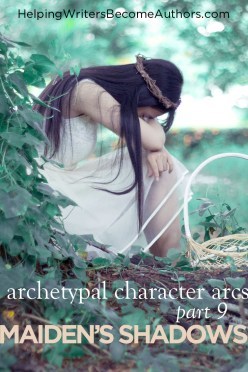 In so many ways, we view life as a story. Within the lifelong journey of this story, the first challenge is that of becoming an autonomous individual—an independent and responsible adult. However obvious that may be, the journey itself cannot be taken for granted. Indeed, although we may all grow up chronologically, the struggle to truly leave childhood behind is one that is often prolonged and even aborted for a great many of us.
In so many ways, we view life as a story. Within the lifelong journey of this story, the first challenge is that of becoming an autonomous individual—an independent and responsible adult. However obvious that may be, the journey itself cannot be taken for granted. Indeed, although we may all grow up chronologically, the struggle to truly leave childhood behind is one that is often prolonged and even aborted for a great many of us.
Within the model of the six archetypal character arcs, this first initiatory journey is represented by the Maiden. She faces external antagonists, metaphorically (and often literally) represented by the Too-Good Mother, the Naive Father, and the Predator-Groom who would devour her youth and innocence. But she also faces internal danger from the shadowy counter-archetypes that, out of fear and egoism, would prevent her from embracing a new perspective and completing her journey.
For the Maiden, these shadow archetypes are represented by the Damsel and the Vixen. The Damsel represents the passive polarity within the Maiden’s shadow, the Vixen the aggressive polarity.
Before we dig into these important archetypes, I will say a quick word about both of their titles, since both archetypes are currently fraught with controversy in modern portrayals.
The Damsel, of course, represents the much despised damsel in distress—usually objectified within the Hero’s Journey (although not without cause, as we discussed in the Hero’s post, since rescuing the Damsel—as played by any character—is an important moment within the Hero Arc, especially since the Damsel can be seen to represent not just an individual character, but a part of the Hero’s own psyche—as do all characters within any particular journey).
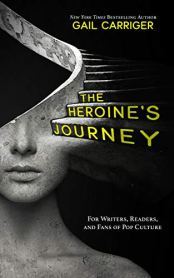
The Heroine’s Journey by Gail Carringer (affiliate link)
Recognizing how the Damsel has often been reduced to a stereotype is important, but it is also important not to discredit the psychological reality of the archetype itself. In The Heroine’s Journey (which mostly speaks to the Queen Arc), paranormal romance author Gail Carringer points out:
The damsel trope is a profoundly powerful representation of weakness. We authors must be wary of who appears weak or victimized in our books, as the message this sends can detrimentally impact an audience’s sense of self-worth.
An equally troublesome archetype/stereotype in today’s media is what I have (after long deliberation) chosen to term the Vixen. Kim Hudson, author of The Virgin’s Promise, and others use the name Whore for this archetype, but to me this seems a bit much for such a young archetype. Similar to the Damsel, the Whore is a viable archetype—and yet it has been used so often to stereotype female sexuality that it requires the same caution as Carringer gives the Damsel.
It is important to recognize that the comparatively powerless Maiden has fewer resources at her disposal when in her aggressive shadow archetype than do any of the successive archetypes. Indeed, instead of “aggressively” controlling others as she would be able to do in the aggressive forms of later arcs (such as the King/Tyrant), she is only able to use what skills her childhood has so far given her. This often takes the form less of actual aggression with others and more of attempts at manipulation. Inevitably, this shadow archetype is one of the most tragic, since it represents a vulnerable character who is ultimately selling off far more of herself than she is able to get in return from others.
That said, I have chosen not to use the term Whore (although you’ll see it in some of the sources I quote), in case it might be a stumbling block, and have instead chosen the (admittedly also not entirely problem-free) title of Vixen.
Once again with our series-wide reminder: The arcs and their related archetypes are alternately characterized as feminine and masculine. This is primarily indicating the ebb and flow between integration and individuation, among other qualities. Together all six primary life arcs create a progression that can be found in any human life (provided we complete our early arcs in order to reach the later arcs with a proper foundation). In short, although I will use feminine pronouns in relation to the feminine arcs and masculine pronouns in relation to the masculine arcs, archetypal representations within these journeys can be of any gender.
The Damsel: A Passive Refusal to Initiate Into AdulthoodLike all the passive archetypes, the Damsel carries a frozen shard of fear in her heart. As the youngest of the negative archetypes, her fear is largely unformed and unnamed. There is a deep innocence to it. She has depended on others all her life to take care of her, and (unlike the Vixen) she has probably been comparatively lucky in that there were people to do so.
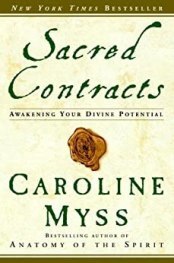
Sacred Contracts by Caroline Myss (affiliate link)
But via her very innocent cared-for-ness, she has never been challenged to rise up. Even if the fear is implicit and unnamed, she is afraid of having to fend for herself—because not only has she never done it, she has also probably been discouraged from doing so. In Sacred Contracts, Caroline Myss notes:
The shadow side of this archetype mistakenly teaches old patriarchal views that women are weak and teaches them to be helpless and in need of protection. It leads a woman to expect to have someone else who will fight her battles for her while she remains devoted and physically attractive and concealed in a castle.
Like Rapunzel in Tangled, the Damsel has been told “Mother Knows Best” and “kept safe” through fearsome stories of the wicked adult world.
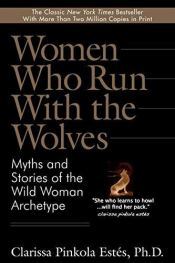
Women Who Run With the Wolves by Clarissa Pinkola Estes (affiliate link)
But as Clarissa Pinkola Estés points out in Women Who Run With the Wolves (which is basically a guide to overcoming the Damsel):
…the reward for being nice in oppressive circumstances is to be mistreated more.
Or as Zora Neale Hurston says in one of my all-time favorite quotes:
If you are silent about your pain, they’ll kill you and say you enjoyed it.
Most of the passive archetypes represent a sort of faux “goodness”—or at least an attempt on the character’s part to avoid being bad. But this avoidance is not active; it is passive. Because it is rooted in fear, it ultimately leads the character to avoid doing the wrong thing by simply… doing nothing. Estés says:
An incompletely initiated woman in this depleted state erroneously thinks she is deriving more spiritual credit by staying than she thinks she will gain by going. Others are caught up in, as they say in Mexico, dar a algo un tirón fuerte, always tugging at the sleeve of the Virgin, meaning they are working hard and ever harder to prove that they are acceptable, that they are good people.
The Damsel is often represented by another familiar archetype—that of the Good Girl, or sometimes Daddy’s Little Girl. Estés again:
It is interesting to note that daughters who have naive fathers often take far longer to awaken…. It can be said that the father, who symbolizes the function of the psyche that is supposed to guide us in the outer world, is, in fact [in this representation], very ignorant about how the outer world and the inner world work in tandem. When the fathering function of the psyche fails to have knowing about issues of soul, we are easily betrayed.
In the beginning, while still a Child, the Damsel’s apparent goodness may seem like maturity. She may be praised for being too “wise” and “mature” to make the seemingly reckless mistakes of the Maiden—which she herself confuses with the unhealthy aggression of the Vixen.
But as time goes on, and life demands she grow up whether she’s ready or not, her true lack of maturity begins to show through. She is not prepared to take care of herself. She lacks both the wisdom and the experience—and, contrary to what she always believed, there will come a day when no one rides in to save her. At the moment when she is truly confronted with the challenges of autonomy, her supposed maturity will leave her defenseless.
The Damsel’s Potential Arcs: Positive and Negative
Creating Character Arcs (Amazon affiliate link)
Within most Maiden Arcs, the protagonist will almost always start out in a very Damsel-like space. This means that, inherent within the Damsel, is all of the Maiden’s potential. Even if she gets stuck in the Damsel space far beyond what would be chronologically preferable, she is like a seed in the winter ground—all the necessary energy for transformation and growth is still latent within her. Particularly since the Child/Damsel marks the beginning of the entire cycle of life arcs, there resides within her great potential for a Positive-Change Arc.
Equally, however, there is the potential for a Negative-Change Arc. If she stays too long a Damsel, she may devolve into her aggressive polarity—the Vixen. But she may also simply regress deeper into a determinedly “innocent” and “helpless” state, refusing to face life head on and instead relying on Blanche DuBois’s “kindness of strangers” to get through life. But as with Blanche in A Streetcar Named Desire, this determined refusal to grow will only nudge her down the line of passive, stunted archetypes as she grows older.
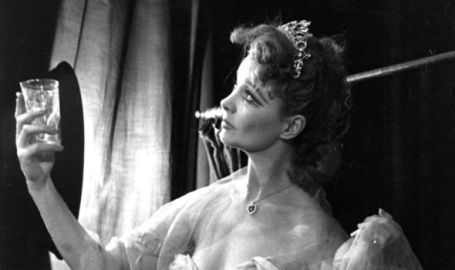
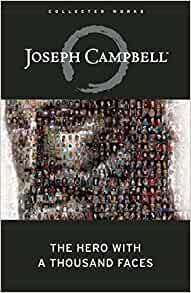
The Hero With a Thousand Faces Joseph Campbell (affiliate link)
In The Hero With a Thousand Faces, Joseph Campbell writes:
The Vixen: A Manipulative/Aggressive Attempt to Avoid the Initiation Into AdulthoodThe literature of psychoanalysis abounds in examples of … desperate fixations. What they represent is an impotence to put off the infantile ego, with its sphere of emotional relationships and ideals. One is bound in by the walls of childhood; the father and mother stand as threshold guardians, and the timorous soul, fearful of some punishment, fails to make the passage through the door and come to birth in the world without.
Like all the aggressive polarities, the Vixen possesses at least a little more consciousness than the Damsel. She sees enough to recognize her antagonists, to resent restraint upon her existence, and to take advantage of what power is immediately available.
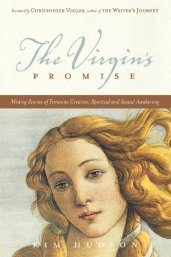
The Virgin’s Promise by Kim Hudson (affiliate link)
Unlike the Damsel, her courage extends beyond “doing nothing out of fear of doing the wrong thing.” But this is not to say that she, too, isn’t terrified of growing up and totally claiming her own power—along with its responsibility. What courage she has is not enough to let her brave the soul-changing difficulties of a true Maiden Arc—which would end with her individuating from her authority figures. The result is that, despite whatever power she believes she wields through her rebellion and manipulation, she is just as helpless as the Damsel. Or as Kim Hudson puts it in The Virgin’s Promise:
The Whore believes she must appease or please people and is thereby a victim.
Just as the Damsel is often represented as the Good Girl, the Vixen is inevitably the Bad Girl. She’s mouthy and defiant in the face of authority—but only to a point. Her seeming power and independence, in comparison to the Damsel (and even the Maiden in the beginning), is a facade. As soon as anyone stronger leans on her, she collapses—sometimes out of fear, but usually simply because she isn’t strong enough to fight back.
And so she resorts to sneaky and manipulative methods for getting what she wants. She “sells” herself by devaluing her worthiness and right to mature into a full-fledged Maiden Arc. Instead, she hides behind the seeming power of her rage. Estés observes:
When a woman has trouble letting go of anger or rage, it’s often because she’s using rage to empower herself.
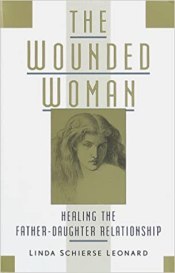
The Wounded Woman by Linda Schierse Leonard (affiliate link)
The Vixen is in a hard place. She refuses to fully accept the authority of those who govern her world (and who probably do protect and provide for her in at least some measure), but she also finds herself unable to entirely accept responsibility for herself by fully claiming her personal sovereignty. In The Wounded Woman, Linda Schierse Leonard points out:
The Vixen’s Potential Arcs: Positive and Negative…those daughters who have reacted against the too authoritarian father are likely to have problems accepting their own authority.
The Vixen offers the inherent potential for a dramatic Positive-Change Arc. Like all the shadow archetypes, she too will probably show her face to at least some degree in any Maiden Arc.
Caroline Myss discusses what she calls the Prostitute as one of four “Archetypes of Survival” within everyone (along with the Child, the Victim, and the Saboteur). She outlines the surprising power of this archetype and the deep potential for growth within it:
The Prostitute archetype engages lessons in integrity and the sale or negotiation of one’s integrity or spirit due to fears of physical and financial survival or for financial gain. This archetype activates the aspects of the unconscious that are related to seduction and control, whereby you are as capable of buying a controlling interest in another person as you are in selling your own power. Prostitution should also be understood as the selling of your talents, ideas, and any other expression of the self—or the selling-out of them. This archetype is universal and its core learning relates to the need to birth and refine self-esteem and self-respect.
Of course, the Vixen also holds the potential for stagnation and even deeper devolution into the shadow archetypes. Instead of using her inherent strength to reorient herself into a powerful Maiden Arc, she might instead follow a tragic Negative Arc in which she becomes even more victimized by the depredations and neglect of her authority figures. One more quote from Estés:
Women who try to make their deeper feelings invisible are deadening themselves. The light goes out. It is a painful form of suspended animation.
Or the Vixen might summon the strength to grow—not into the following positive archetype of the Hero, but rather into the subsequent aggressive counter-archetype of the Bully (to be discussed next week). Leonard speaks of this in an interesting way:
Key Points of the Maiden’s Shadow Archetypes…too often in order to break out of the puella [eternal girl] dependency, they imitate the masculine model and so perpetuate the devaluation of the feminine.
For easy reference and comparison, I will be sharing some scannable summations of each arc’s key points:
Passive Shadow Archetype: Damsel is Submissive (to protect from consequences of Dependence)
Aggressive Shadow Archetype: Vixen is Deceptive (aggressive use of Dependence)
Positive Maiden Arc: Innocent to Individual (moves from Protected World to Real World)
Maiden’s Story: An Initiation.
Maiden’s Symbolic Setting: Home
Maiden’s Lie vs. Truth: Submission vs. Sovereignty.
“Submission to authority figures is necessary for survival.” versus “Personal sovereignty is necessary for growth and survival.
Maiden’s Initial Motto: “We, the clan.”
Maiden’s Archetypal Antagonist: Authority/Predator
Maiden ’ s Relationship to Own Negative Shadow Archetypes:
Either Damsel finally owns her Potential by embracing her Strength.
Or Vixen learns to wield her true Potential with true Strength.
Examples of the Damsel and Vixen ArchetypesExamples of the Damsel and Vixen archetypes include the following. Click on the links for structural analyses.
Damsel
Paula Alquist in GaslightMrs. de Winter in RebeccaNeil Perry in Dead Poets SocietyBeth in Little Women Celie Johnson in The Color PurpleDora Copperfield in David CopperfieldRapunzel in TangledVixen
Gwendolen Harleth in Daniel DerondaPip in Great ExpectationsCharlotte Flax in MermaidsCathy Earnshaw in Wuthering Heights Antonio Salieri in Amadeus (among other aggressive counter-archetypes)Lydia Bennet in Pride & Prejudice Abigail in The FavouriteStay Tuned: Next week, we will study the shadow archetypes of the Hero: the Coward and the Bully.
Related Posts:
Story Theory and the Quest for MeaningAn Introduction to Archetypal StoriesArchetypal Character Arcs: A New SeriesThe Maiden ArcThe Hero ArcThe Queen ArcThe King ArcThe Crone ArcThe Mage ArcIntroduction to the 12 Negative ArchetypesWordplayers, tell me your opinions! Can you think of any further examples of stories that feature either the Damsel or the Vixen? Tell me in the comments!Click the “Play” button to Listen to Audio Version (or subscribe to the Helping Writers Become Authors podcast in Apple Podcast or Amazon Music).
___
Love Helping Writers Become Authors? You can now become a patron. (Huge thanks to those of you who are already part of my Patreon family!)The post Archetypal Character Arcs, Pt. 9: The Maiden’s Shadow Archetypes appeared first on Helping Writers Become Authors.
March 29, 2021
Archetypal Character Arcs, Pt. 8: Introduction to the 12 Shadow Archetypes
 Where there is light, there is shadow. Where is there is a right way to do things, there are usually several ways to do it wrong. So it goes with archetypal character arcs and their potential shadow archetypes—of which there are two for every positive archetype.
Where there is light, there is shadow. Where is there is a right way to do things, there are usually several ways to do it wrong. So it goes with archetypal character arcs and their potential shadow archetypes—of which there are two for every positive archetype.
Over the last few months, we have explored six successive “life arcs,” represented by the Positive-Change Arcs of six primary archetypes—the Maiden, the Hero, the Queen, the King, the Crone, and the Mage. Each of these positive archetypes represents a rising above the limitations of the previous archetype in the cycle. But they also inherently represent a struggle with related “shadow” or negative archetypes.

Sacred Contracts by Caroline Myss (affiliate link)
Specifically, there are twelve negative archetypes—two for each positive archetype. Each positive archetype sits at the top of a triangle that is completed by a potential negative polarity between the two negative archetypes—one representing an aggressive version of the shadow archetype and the other representing a passive version. In Sacred Contracts, Caroline Myss speaks of the inherent power dynamic within this archetypal triangle:
The shadow aspects of our archetypes are fed by our paradoxical relationship to power. We are as intimidated by being empowered as we are by being disempowered.
This is why one of the primary challenges within any of the six positive archetypal arcs is that of grappling with one’s conflicting desire for and fear of autonomy. Only in integrating and accepting the responsibility for this growing power is a character able to escape the beckoning shadow archetypes and instead level up into the next “life arc.”
12 Shadow or Negative Archetypes
The Virgin’s Promise by Kim Hudson (affiliate link)
More or less classically (and with a big nod to Kim Hudson’s The Virgin Promise and Douglas Gillette and Robert L. Moore’s King, Warrior, Magician, Lover), the corresponding archetypes can be viewed like this:
1. Positive: Maiden
Passive: Damsel
Aggressive: Vixen
2. Positive: Hero
Passive: Coward
Aggressive: Bully
3. Positive: Queen
Passive: Snow Queen
Aggressive: Sorceress
4. Positive: King
Passive: Puppet
Aggressive: Tyrant
5. Positive: Crone
Passive: Hermit
Aggressive: Wicked Witch
6. Positive: Mage
Passive: Miser
Aggressive: Sorcerer

Creating Character Arcs (Amazon affiliate link)
Just as the temptation and struggle against the shadow archetypes’ corruption is inherent within all of the archetypal Positive-Change Arcs, so too are the two negative archetypes inherent within each other. Although a character representing a negative archetype will usually manifest most obviously as one or the other—passive or aggressive—they are really just two sides of the same coin. For example, inherent within any Coward, there is usually a latent Bully, just as the Bully is often a Coward at heart.
There are many ways negative archetypes can arc:
From negative to positive (a Positive-Change Arc)From positive to negative (a Corruption Arc)From passive to aggressive (a Fall Arc)From aggressive to passive (which is not exclusive to but can be seen in a Disillusionment Arc).Not at all (a negative Flat Arc, in which the character is less likely to be the protagonist and more likely to be the antagonist in someone else’s Positive-Change Arc or a negative Impact Character in someone else’s Negative-Change Arc).The Passive Counter-ArchetypesThe passive archetypes represent a fatal immaturity. No matter at what stage characters find themselves within the life arcs, their first challenge will be to resist their own sense of complacency and safety—which would keep them where they’re at. But, in fact, they have little choice about whether or not they will be called into the journey of a subsequent archetype. They can only decide whether they will grow, or whether they will resist.
The passive shadow archetypes are the result of a refusal to grow into the next arc and instead an attempt to maintain power in its former guise. For example, someone who has successfully completed the Hero Arc and is now being challenged to grow into the Queen Arc may resist the call of leadership and responsibility—and hide away within the selfish passivity of the Snow Queen. Life is demanding this character change, but the character resists, cannot overcome fear, and fails to complete proper growth—ending emotionally stunted and unfit to take on the responsibilities that life has now given.

Art and Artist by Otto Rank (affiliate link)
In Art and Artist, Otto Rank discusses the passive archetype as the “neurotic”:
If we compare the neurotic with the productive type, it is evident that the former suffers from an excessive check on his impulsive life…. Both are distinguished fundamentally from the average type, who accepts himself as he is, by their tendency to exercise their volition in reshaping themselves. There is, however, this difference: that the neurotic, in this voluntary remaking of his ego, does not get beyond the destructive preliminary work and is therefore unable to detach the whole creative process from his own person and transfer it to an ideological abstraction. The productive artist also begins … with that re-creation of himself which results in the ideologically constructed ego; [but in his case] this ego is then in a position to shift the creative will-power from his own person to ideological representations of that person and thus render it objective. It must be admitted that this process is in a measure limited to within the individual himself, and that not only in its constructive but also in its destructive aspects. This explains why hardly any productive work gets through without morbid crises of a “neurotic” nature.
In short, facing the passive archetype is one of the earliest steps in any positive archetype’s forward struggle. This fearful shadow aspect of one’s self represents what we often hear spoken of within the Hero’s Journey as the Hero’s “Refusal of the Call to Adventure.” Put simply: he’s scared. And considering the immensity of the journey before him, we all commiserate with exactly why that should be.
But if the Hero—or any other positive archetype—should succumb to this fearful part of himself, he will abort not just the journey but his own ability to grow and mature. He will get stuck as the Coward, and his own progress forward in life will become immeasurably more difficult.
The Aggressive Counter-Archetypes
The Heroine’s Journey by Maureen Murdock (affiliate link)
By contrast, the aggressive polarity of the negative archetypes represents not so much the fear of reality but the desire to control it. Although the aggressive archetypes are literally the polar opposite of the passive archetypes, the passive archetypes are still often at the root of a character’s aggression. In many ways, the aggressive archetypes represent an overcompensation in response to the character’s inner fear of change and growth. In The Heroine’s Journey, Maureen Murdock quotes Edward Whitman:
Whether creative possibilities or regressive destruction shall prevail depends not upon the nature of the archetype or myth, but upon the attitude and degree of consciousness.
Even though the aggressive archetypes appear much more proactive and productive than do the passive archetypes, they too represent a stagnation. They may be “getting things done” within their realm of activity, but they are not moving forward.
For example, a Crone who has refused to take her journey into the Mage may get stuck in the aggressive polarity of the Wicked Witch—using the not-inconsiderable power she has gleaned throughout her long life to control others and manipulate outcomes. She looks powerful, but unlike the Crone, the Witch is not expanding. She represents not just a stillness within the character’s maturation, but a stagnation—she has gotten stuck through her own passivity and fear, has refused (however unconsciously) to continue growing, and has instead turned her energy outwards upon a world she resents.
How Archetypes Relate to the Thematic Truth/LieAs we’ve already discussed, the six archetypal Positive-Change Arcs represent the character’s ability to transition away from a limiting life belief and into an acceptance of an inherent archetypal Truth.
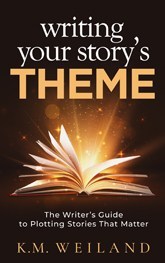
Writing Your Story’s Theme (Amazon affiliate link)
These same archetypal Lies/Truths are also inherent within the related negative shadow archetypes. The difference, of course, is that these negative archetypes resist the Truth. Through fear of change or desire for control, they cling to a broken version of reality. Depending on the specific type of Negative-Change Arc they are undergoing (Disillusionment, Corruption, Fall), they will encounter various opportunities to acknowledge and accept the Truth. In a legitimate Negative-Change Arc, they will fail to do so—and the metaphorical Kingdom will always suffer as a result.
How the Negative Archetypes Relate to the Positive ArcsWithin all types of archetypal stories—whether they feature protagonists with Positive or Negative Arcs—we always have the opportunity for a full cast. Just as the negative polarities are inherently present to some degree within the struggling protagonist of a Positive-Change Arc, so too is the positive archetype within the struggles of a protagonist in a Negative-Change Arc.
More than that though, we have the opportunity to externalize these struggles into the supporting cast. We can see this clearly—and have already touched on it in earlier posts—in the fact that the Hero’s Journey prominently features more advanced archetypal characters in supporting roles—-most notably the King and the Mage/Mentor.
Likewise, negative archetypes frequently show up in villain roles. I haven’t observed a hard-and-fast pattern, but it resonates that one of the powerful uses of negative archetypes within a positive-archetype story is that of presenting the protagonist with a version (usually aggressive) of the subsequent archetype. For example, a Queen almost always has to confront and overcome a Tyrant (the aggressive version of the subsequent arc of King).
Not only does this approach provide opportunities for a solid plot-theme connection, it also offers the always-brilliant chance to symbolically represent the antagonist as a shadow version of the protagonist’s potential self. As such, the antagonist can offer both temptation to the growing protagonist of the power she might wield, as well as a caution of what kind of monster she might turn into should she succumb to that temptation.
Same goes for the characters in a Negative-Change Arc story: if the protagonist is representing a negative archetype such as the Sorceress, then the rest of the cast can be used to represent supporting archetypes that deepen the thematic and symbolic narrative.
***
As you can already see—and as is always the case with negative character arcs—there are many possible variations that can arise when a character falls away from the health of the positive archetypes and into the unhealth of the negative archetypes.
This means there are many possible narratives for representing them in the protagonist of a Negative-Change Arc. As such, I won’t be offering a “mythic beat sheet” for each of the negative archetypes in the same way I have done for the positive archetypes.
Over the course of the next six posts, we will be diving a little more deeply into the partnership of each passive/aggressive polarity and talking about how you can recreate these important archetypes within your own stories.
Stay Tuned: Next week, we will study the shadow archetypes of the Maiden.
Related Posts:
Story Theory and the Quest for MeaningAn Introduction to Archetypal StoriesArchetypal Character Arcs: A New SeriesThe Maiden ArcThe Hero ArcThe Queen ArcThe King ArcThe Crone ArcThe Mage ArcWordplayers, tell me your opinions! Are you more drawn to writing about Positive or Negative Arcs? Tell me in the comments!Click the “Play” button to Listen to Audio Version (or subscribe to the Helping Writers Become Authors podcast in Apple Podcast or Amazon Music).
___
Love Helping Writers Become Authors? You can now become a patron. (Huge thanks to those of you who are already part of my Patreon family!)The post Archetypal Character Arcs, Pt. 8: Introduction to the 12 Shadow Archetypes appeared first on Helping Writers Become Authors.
March 22, 2021
Archetypal Character Arcs, Pt. 7: The Mage Arc
 The final two archetypal character arcs in the life cycle deal primarily with questions of Mortality—and thus inevitably with the ultimate questions about the meaning of life.
The final two archetypal character arcs in the life cycle deal primarily with questions of Mortality—and thus inevitably with the ultimate questions about the meaning of life.
Throughout this series, we’ve viewed the six “life arcs” as part of a unified story structure, or Three Acts. The First Act—featuring the Maiden and the Hero—focused on overcoming challenges of Fear in integrating the parts of oneself and individuating. The Second Act—the Queen and the King—focused on challenges of Power and on integration within relationship to others. Finally, the Third Act—the Crone and the Mage—turns its attention to Mortality and to the integration of soul and spirit.
As we discussed in last week’s post, the Crone Arc represented the complete transition of the character from the “outer” world struggles with one’s self and other people into the “inner” world struggles with more existential and spiritual crises. Although anyone who lives long enough will reach the Crone Arc at least chronologically, not everyone will accept her challenge and fulfill her difficult arc of embracing her own mortality. Therefore, even fewer among us will even get the opportunity to truly take on the deep mysteries of the powerful Mage Arc.
In part because of that fact itself, the Mage Arc is mysterious. We see it most plainly in the metaphor of fantasy stories that offer up a supernatural Mentor to a world in need. But rarely is this character the protagonist (perhaps because almost all of us relate more obviously to the younger archetypes who mirror our own positions in the cycle). Even more rarely is the Mage fully embodied in a “realistic” story (although to my mind Atticus Finch in To Kill a Mockingbird seems a possible example from a symbolic viewpoint).

Even when the Mage shows up in a real-world story, his deep, almost otherworldly wisdom inevitably brings with it a touch of the magical—as, for example, with Will Smith’s wise and mysterious caddy in the golf movie The Legend of Bagger Vance.
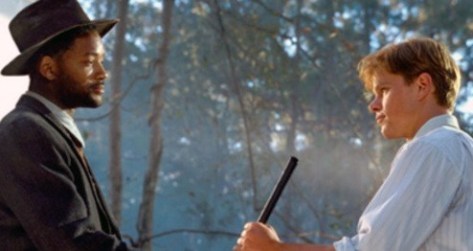

Sacred Contracts by Caroline Myss (affiliate link)
In Sacred Contracts, Caroline Myss notes:
The … Magician produce[s] results outside the ordinary rules of life….
This doesn’t necessarily mean the character is magical in any way. But it does mean the character has not only glimpsed but assimilated truths about life that most people don’t even know exist. By accepting his own mortality back in the Crone Arc, he has now reached a new level of transformation, objectivity, and wisdom.
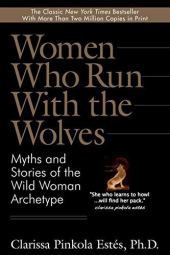
Women Who Run With the Wolves by Clarissa Pinkola Estes (affiliate link)
In Women Who Run With the Wolves, Clarissa Pinkola Estés speaks to this archetypal wisdom:
The mage, or magician [is] whom the king brings with him to interpret what he sees…. Such things as the split-second recall, the thousand-league vision, the hearing over miles, the empathic ability to see from behind anyone’s eyes—human or animal— … the magician … shares in these and also, traditionally, helps to maintain them and enact them in the outer world. Though the mage can be of either gender, here it is a powerful male figure similar in fairy tales to the stalwart brother who so loves his sister that he will do all to help her. The mage always has crossover potential. In dreams and in tales, he appears as a man as often as he shows up as a woman. He can be male, female, animal, or mineral, just as the crone, his female counterpart, can also affect her guises with ease.
For the Mage, who has already accepted Death, what is there left to transform? What is left, of course, is the final threshold to cross in earnest. But there is also the final temptation—to use his great power and wisdom, the riches of his entire well-spent life, not to guide those he loves but to control them in ways he has no right to. Will he surrender—or become Sorcerer?
Reminders: Once again, before we officially get started, I want to emphasize two important reminders that hold true for all of the arcs we’ve studied.
1. The arcs are alternately characterized as feminine and masculine. Primarily, this indicates the ebb and flow between integration and individuation, among other qualities. Together, all six life arcs create a progression that can be found in any human life (provided we complete our early arcs in order to reach the later arcs with a proper foundation). In short, although I will use feminine pronouns for the feminine arcs and masculine pronouns for the masculine arcs, the protagonist of these stories can be of any gender.
2. Because these archetypes represent Positive-Change Arcs, they are therefore primarily about change. The archetype in which the protagonist begins the story will not be the archetype in which he ends the story. He will have arced into the subsequent archetype. The Mage Arc, therefore, is not about becoming the Mage archetype, but rather arcing out of it into the beginnings of what I’m calling “the Saint” archetype—but basically just indicating his final ascension into a “good death.”
The Mage Arc: Joining GodAlthough the Mage can be played by a younger character, the arc itself is representative of the final chapter of one’s life. The Mage represents a person who has successively and positively completed all six life arcs. This is, in fact, an unusual and extraordinary achievement. Merely reaching the end of our lives doesn’t mean we’ll get to go out as Mages. The Mage, then, is someone who put in an unfailing amount of work throughout his life, someone who has consistently sought light and truth—and been rewarded in that search.
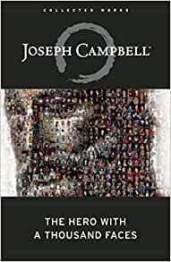
The Hero With a Thousand Faces Joseph Campbell (affiliate link)
And now he has almost reached the end. Not only is the end of his life on earth incumbent because of his great age, but he has transcended many of the challenges that weigh us down in our earlier acts. In The Hero With a Thousand Faces, Joseph Campbell speaks of this stage:
The ego is burnt out. Like a dead leaf in the breeze, the body continues to move about the earth, but the soul has dissolved already in the ocean of bliss.
But however wise the Mage may be, he is still a body on this earth, and he has not yet surrendered everything. There remain things he cares about, causes in which he passionately believes. And however burnt out the ego may be, there is still a flickering spark. He has the ability and the insight to not just guide those who come behind him, but to shape and even control certain outcomes. How he uses his power and how ready he is to truly shed the things of this world and step willingly into death will be the mark of his final successful arc.
Stakes: Leaving Behind Good World for Those to FollowAs with all good stories, life has a tendency to come full circle. Grandparents often become increasingly focused on the “legacy” they will leave to their beloved descendants. Physically, they sometimes even return to the very same hearth at which they themselves leaned on their own grandparents’ knees, hearing stories of adventures long past.
It is no wonder we most prominently find the Mage in his Flat-Arc form of Mentor. The deeper we get into the life arcs, the more frequently we see previous archetypes showing up in some version of their own stories. And so the Mage Arc inevitably runs concurrently with the younger arcs, particularly those of Hero and King. The Mage is the wise voice in their ear, initiating them and guiding them to see what they have not yet the maturity or the experience to see for themselves.
The Mage cares deeply about whether these younger characters will fulfill their arcs. Will they be able to face the same challenges he did? Will they overcome? How will they be able to resist the temptations of sloth and power present in their counter-archetypes if the Mage does not take care to protect them from themselves?
The Mage’s challenge is very much represented in the anecdote about the boy who waited and waited for his caterpillar to emerge from its cocoon. When the time came and he witnessed how terribly the butterfly struggled to free itself, he “helped” by clipping open the cocoon. He did not realize the butterfly’s struggle out of the tight cocoon was what forced the blood into its beautiful wings. This butterfly emerged with its wings impossibly swollen and limp—and, to the boy’s chagrin, it died.
The Mage, who holds so much power to shape the lives of those he loves, faces the primary challenge of letting them go. He must let them face their own struggles and make their own mistakes. Not only is this crucial to the continuance of healthy life-arc cycles after him, it is also his final challenge in shedding his remaining burdens of this world—and stepping freely into the next.
Antagonist: Understanding the Nature of EvilWithin the Mage’s story, the external conflict may be represented by relatively mundane threats. This is because what now threatens the Kingdom is necessarily a threat “of this world” and rightly pertaining, in fact, to the conflicts of earlier arcs. The Kingdom is under dire threat—perhaps by the Hero’s Dragon, the Queen’s Invaders, or the King’s Cataclysm—but that threat will ultimately be faced by the younger archetypes. The Mage is there to help them understand their duties, but more than that, he is there to combat an even more archetypal antagonist the others cannot yet see.
Campbell puts it:
They fight the demons so that others can hunt the prey and in general fight reality.
This can be seen in the beautiful fantasy stories of The Lord of the Rings and Harry Potter, both of which feature Mentor/Mage characters—Gandalf the White and Dumbledore, respectively—who use their power against a much greater evil, while also guiding the younger archetypes as they take on more corporeal antagonists.

However epic the stakes may (or may not) be in the story’s external conflict, the Mage’s story is ultimately one of tying off loose ends and ending the tale. It is about ending one’s life well and dying a good death. Campbell references this finale in a quote from Dante Alighieri’s spiritually metaphoric poem The Inferno:
So it is that when Dante had taken the last step in his spiritual adventure, and came before the ultimate symbolic vision of the Triune God in the Celestial Rose, he had still one more illumination to experience, even beyond the forms of the Father, Son, and Holy Ghost. “Bernard,” he writes, “made a sign to me, and smiled, that I should look upward; but I was already, of myself, such as he wished; for my sight, becoming pure, was entering more and more, through the radiance of the lofty Light which in Itself is true. Thenceforward my vision was greater than our speech, which yields to such a sight, and the memory yields to such excess.”
The Mage need not literally die in your story (especially if he is represented by a younger character). But he will almost certainly journey on in some respect, even if it is just walking off into the sunset like Bagger Vance (or, in a more symbolic version, Galadriel’s “diminishing into the West” after resisting the final temptation of the Ring’s power).
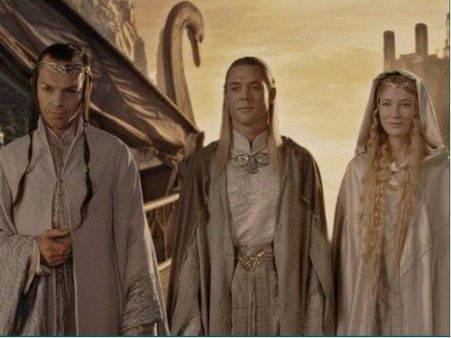
If he does die, the death may either be a voluntary choice in some sense (such as Obi-Wan Kenobi’s sacrificing himself to Darth Vader in A New Hope or Dumbledore’s plot with Snape in The Half-Blood Prince) or at least a death to which he goes without regret or reluctance (as does Yoda in Return of the Jedi and Garth and Hub McCann in Secondhand Lions). He represents someone “who has fought the good fight and finished his race.”

For easy reference and comparison, here are some scannable summations of the arc’s key points:
Mage’s Story: A Mission.
Mage Arc: Sage to Saint (Liminal World to Yonder World)
Mage’s Symbolic Setting: Cosmos
Mage’s Lie vs. Truth: Attachment vs. Transcendence
“My love must protect others from the difficult journey of life.” versus “True love is transcendent and allows life to unfold.”
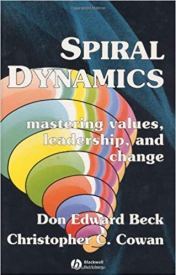
Spiral Dynamics by Don Edward Beck and Christopher C. Cowan (affiliate link)
Mage’s Initial Motto: “I, the knowing.”
(This is via Spiral Dynamics’ “Yellow” Meme. If you’re not familiar with Spiral Dynamics, this probably won’t mean anything, but I was fascinated to realize that the six positive archetypal arcs line up perfectly with the “memes” of human development as found in the theory of Spiral Dynamics.)
Mage’s Archetypal Antagonist: Evil
Mage ’ s Relationship to Own Negative Shadow Archetypes:
Either Miser finally opens himself up through his Wisdom to gain Transcendence.
Or Sorcerer learns to surrender his worldly wisdom in exchange for true Transcendence.
The Beats of the Mage Character ArcFollowing are the structural beats of the Mage Arc. Even more than ever for this arc, I am using allegorical language (in keeping with the tradition of the Hero’s Journey). However, it is important to remember the language is merely symbolic. None of the archetypes or settings need to be interpreted literally.
This is merely a general structure that can be used to recognize and strengthen Mage Arcs in any type of story. Although I have interpreted the Mage Arc through the beats of classic story structure, it doesn’t necessarily have to line up this perfectly. A story can be a Mage Arc without presenting all of these beats in exactly this order.
1st ACT: Liminal WorldBeginning: Powerful But Limited
The Mage is an enlightened person—-someone who has understood and accepted the vast and paradoxical partnership of Life and Death. He walks the Liminal World—an existence that is neither Life nor Death but between them. He has no particular home, but roves the land, moving from problem spot to problem spot, helping resolve magical hang-ups or simply solve disputes via his otherworldly wisdom.
He is greatly revered and loved, seen by some as an avuncular friend and by others as a fearsome mystical force. He loves others, but really he loves all—living in a calm neutrality that sees the greater purposes at work in Life’s systems.
He is a friend of Death—but not of Evil, which he has learned to distinguish as not Death itself but the death urge or the addiction to power (being the power over Life and Death). As such, he is careful of his own power, recognizing himself not as a master but as a servant. In overcoming his fear of Death, he has also largely transcended his ego.

In The Legend of Bagger Vance, the mysterious caddy and golf expert shows up, seemingly out of nowhere, seemingly in need of a job—from the one person who most needs his help.
Inciting Event: Revelation/Rise of Evil
At one of the stops along his pilgrimage, the Mage learns of “a disturbance in the Force.” He learns Evil has returned or is lurking, waiting for the alignment of events. The Mage is deeply disturbed, not only because he stands opposed to Evil, but because he fears for the suffering and misguidance that may be inflicted on the Kingdom and its children, whom he loves.
He may here encourage a Hero to help him, either to hold the fort while he’s gone or to accompany him on his mission to seek out the source of this threat of Evil and hopefully cut it off at the pass. But the Hero dawdles, and the Mage must start the action on his own.

In The Miracle on 34th Street, Kris Kringle agrees to take a job as Santa Claus in Macy’s Department Store when he realizes the true spirit of Christmas has been forgotten amidst all the commercialism and cynicism.
2ND ACT: Yonder WorldFirst Plot Point: Climbs the Mountain
The Mage climbs the Mountain, bravely ascending to the Yonder World because only he has the power and insight to do so. He is allowed to understand the full threat of the Evil.
He may confront a Sorcerer corrupted into a conduit for Evil, or he may witness Evil itself. He may wrestle with his own dilemma, fighting against the need to surrender and the idea that true love is transcendent.
The Hero may accompany him or may go off on his own Quest. He is unlikely to ascend the Mountain with the Mage, but if he does, he will not see the full extent of the supernatural that the Mage does.
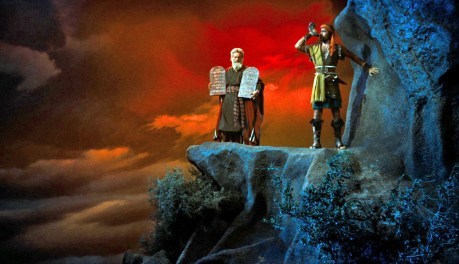
In The Ten Commandments, Moses ascends Mt. Sinai to receive the Ten Commandments from God. (He leaves his protege Joshua halfway up.)
First Pinch Point: Evil Infiltrates the Camp of Man
The courage of man begins to fail. In the face of the great Evil, some waver in their goodness when confronted by their fear of Death. Compromises and deals with the devil are made. The Hero is abused for his efforts and also tempted from his path. The Mage returns to scold and advise the people of the Kingdom. Even in his profound wisdom, he is deeply invested in their fate. He doesn’t want them to suffer or to choose the wrong path. He mentors them.
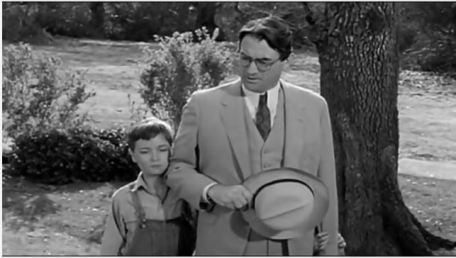
In To Kill a Mockingbird, Atticus insists his son Jem spend a month reading to a crotchety old lady after Jem destroyed her flowers in a fit of rage.
Midpoint: Confronting Evil—and Also Evil in the Heart of Man
The Mage loves his world and his people. He wants to help them as a good Father/Grandfather should. But he is beginning to realize he cannot help them. They must help themselves. In a great battle or time of need, he may confront Evil itself to clear a path for them (to help keep it a “fair fight”), but he cannot defeat the evil inclinations in their own hearts. He can only stand by and wait—and hope.
But even his hope is a source of inner conflict. He is caught between the urge to save them and the need to access the surrendered love of detachment.
Thanks in part to the Mage’s intervention (and also his counsel), the Kingdom escapes destruction even though it may be defeated in this battle. The Hero rallies to his true identity and strength, in no small part because his love for the Mage causes him to want the Mage to be proud of him and pleased by his efforts.
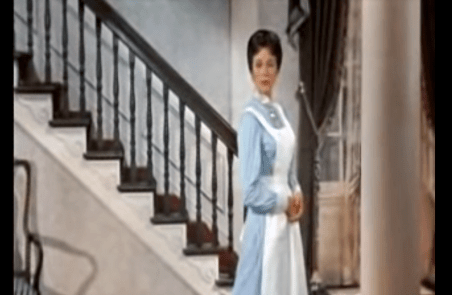
In Mary Poppins, Mary maneuvers the children’s neglectful father into taking them with him to his job at the bank.
Second Pinch Point: Heart Is Broken by Man ’s Suffering
Man is betrayed by Man. The Hero is in bad straits, broken, doubting, suffering. The Mage is deeply wounded by his love for them all. He is challenged in his growing realization that true Love is transcendent and cannot make choices for others in order to protect them from their own mistakes. The Mage comforts the Hero and others but hasn’t much else to offer. He rages within himself, struggling and angry that it should be so.

In Miracle on 34th Street, Kris is incensed when he hears that his young ward who enjoys playing Santa Clause for younger children has been told by the store psychiatrist that something is wrong with this desire.
3rd ACTFalse Victory: Refuses to Interfere with Man ’s Choices—and Man Chooses Wrong
The Mage wins his inner battle and makes the hard choice to let the Kingdom dwellers, including his Hero, go forth and make exactly the wrong choice. There is tremendous fallout, but the Mage must stand back, seemingly callous, and watch, trusting that it is part of a bigger plan, which he is now coming into alignment with.

In Doctor Strange, the Ancient One allows herself to die.
Third Plot Point: Brink of Annihilation
The Kingdom faces death in the external conflict. The Mage, however, faces transformation—the choice to finally and fully step into the Yonder World (i.e., death).

In The Return of the Jedi, Yoda recognizes it is his time to return to the Force.
Climax: Meeting With the Divine
In the midst of his annihilation/transformation, the Mage is confronted by the Divine and is thus raised above the mortal world of men, including their limited insight and emotion. He will finish what he started as the Crone, this time literally leaving Death for Life.

Galadriel passes her final test of refusing the One Ring’s power, even though she knows it means she “will now diminish” and “pass into the West.”
Climactic Moment: Evil Redeemed/Destroyed
The Mage does not directly interfere in the great battle against Evil, but the Hero and others see him and are inspired to seek Good against Evil whatever the cost. He inspires them to seek Hope. Through his inspiration and their efforts, Evil is either redeemed or destroyed.
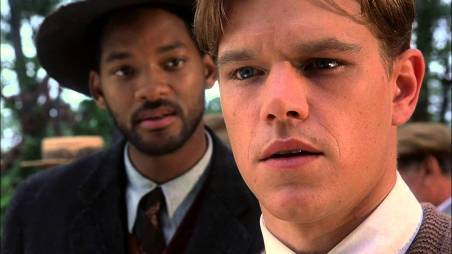
On the last hole, Bagger Vance steps back to let his student make his own decision about whether he will win the game by cheating.
Resolution: Kingdom Renewed for Another Cycle
The Mage says his goodbyes, engulfing the sorrow of his children in great love, as he prepares to journey on to the Heavens.
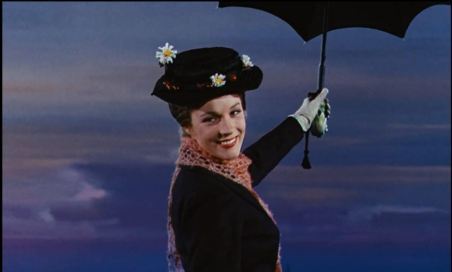
Mary Poppins leaves the Banks family, sad to go because she loves them but knowing it is best for them to make do on their own now.
Examples of the Mage Arc
For reasons already mentioned, I found it difficult to discover many examples of a Mage Arc undertaken by a protagonist, so many of the following examples include characters who are more properly “Mentors” in someone else’s story. Click on the links for available structural analyses.
Kris Kringle in The Miracle on 34th St.The Ancient One in Doctor Strange Yoda in Star Wars Alfred Pennyworth in BatmanGaladriel in The Lord of the Rings Gandalf the White in The Lord of the RingsGarth McCann in Secondhand Lions Atticus Finch in To Kill a Mockingbird The Oracle in The Matrix Mary Poppins in Mary Poppins Bagger Vance in The Legend of Bagger VanceStay Tuned: Next week, we will begin studying the Negative or Shadow Archetypes.
Related Posts:
Story Theory and the Quest for MeaningAn Introduction to Archetypal StoriesArchetypal Character Arcs: A New SeriesThe Maiden ArcThe Hero ArcThe Queen ArcThe King ArcThe Crone ArcWordplayers, tell me your opinions! Can you think of any further examples of stories that feature the Mage Arc? Tell me in the comments!Click the “Play” button to Listen to Audio Version (or subscribe to the Helping Writers Become Authors podcast in Apple Podcast or Amazon Music).
___
Love Helping Writers Become Authors? You can now become a patron. (Huge thanks to those of you who are already part of my Patreon family!)The post Archetypal Character Arcs, Pt. 7: The Mage Arc appeared first on Helping Writers Become Authors.
March 15, 2021
Archetypal Character Arcs, Pt. 6: The Crone Arc
 Within the saga of the six archetypal character arcs representing the cycle of human life, the two “elder” arcs that comprise the Third Act of life are perhaps the least dramatized. These arcs are those of the Crone and the Mage.
Within the saga of the six archetypal character arcs representing the cycle of human life, the two “elder” arcs that comprise the Third Act of life are perhaps the least dramatized. These arcs are those of the Crone and the Mage.
In studying these arcs, it becomes evident that the Third Act of story structure is, in itself, rather more mysterious than we give it credit for. In our modern storytelling, the Climax is meant not only to be the point, but also the most exciting moment in the story. But many views of story structure (not least the classic Hero’s Journey) instead emphasize the Midpoint as the most significant moment in the plot, with the Third Act acting as more of a resolution or summation.
Although that is a discussion for another time, it is interesting to acknowledge the parallels in this view of structure with that of human life itself. In many ways, a person’s Third Act is the “quietest” time of life. What happens within it is massively influenced by the choices that have come before in the previous two acts. Now we have only to see how everything pans out.
But this is, in many ways, only a surface view of the final act of life. If the Elders are no longer so embroiled in the challenges of survival and power that mark the earlier acts, they are no less involved in the final and in many ways the greatest challenge—the conundrum of a life that must end in death.
In our deeply death-averse Western culture, we have largely avoided stories about the Third Act of life. This is both cause and effect to the reality that just as our modern societies lack crucial initiations for the young (such as found in the Maiden and Hero Arcs), they also suffer from a dearth of true Elders—those who have completed all previous life arcs and are able to not only undertake their own final and most crucial arcs, but also to act as the archetypal Elders and Mentors who are so catalytic in the younger arcs.
In short, I believe these arcs are desperately important and under-served. It is, in fact, difficult to think of many suitable story examples. Most of the time when a Crone or a Mage shows up in a story (especially a popular or genre story), they appear as a supporting character within the arc of a younger protagonist.
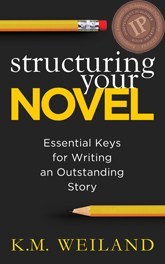
Structuring Your Novel (Amazon affiliate link)
The Crone Arc begins the final act of the “life arcs” by presenting an inevitable and imperative Underworld Journey. Just as the transition from Queen to King marked the Midpoint or Moment of Truth in the overarching saga, the transition from King to Crone signifies the Third Plot Point. And if you have studied story structure with me before, you already know the Third Plot Point is the doorway of Death and Rebirth.
…one night
here’s a heartbeat at the door.
Outside, a woman in the fog,
with hair of twigs and a dress of weed,
dripping green lake water.
She says, “I am you,
and I have a traveled a long distance.
Come with me, there is something I must show you…”
She turns to go, her cloak falls open,
Suddenly, golden light … everywhere, golden light….
—“Woman Who Lives Under the Lake” by C.P. Estes
Reminders: Once again, before we officially get started, I want to emphasize two important reminders that hold true for all of the arcs we are studying.
1. The arcs are alternately characterized as feminine and masculine. Primarily, this indicates the ebb and flow between integration and individuation, among other qualities. Together, all six life arcs create a progression that can be found in any human life (provided we complete our early arcs in order to reach the later arcs with a proper foundation). In short, although I will use feminine pronouns for the feminine arcs and masculine pronouns for the masculine arcs, the protagonist of these stories can be of any gender.
2. Because these archetypes represent Positive Change Arcs, they are therefore primarily about change. The archetype in which the protagonist begins the story will not be the archetype in which she ends the story. She will have arced into the subsequent archetype. The Crone Arc, therefore, is not about becoming the Crone archetype, but rather arcing out of it into the beginnings of the Mage Arc—and so on.
The Crone Arc: Facing Down DeathThe word “Crone” is a tricky one in some ways (although this seems appropriate to me because the Crone herself is a tricky one). The word conjures images of a hook-nosed hag with a hairy wart on her lip. Gone is all the beauty of youth, to the point that her visage is almost frightening. She lives alone, deep in the woods, discouraging contact with the curious and half-terrified children who seek her out to see if she is really the witch of local legend.
A popular figure in folk and fairy tales, she is often amoral, sometimes wreaking havoc on unwary villagers who dare trespass in her woods, sometimes offering surprising understanding and blessing—and usually the difference is decided by the worthiness of the intruder.
When we hear tell of the “Crone,” our response is often visceral and uncertain. But I have come to love the word, because the true Crone (and not her negative counter-archetypes of Hermit or Wicked Witch) is a portal to the deep wisdom of Elderhood. Her external beauty is vanished. Any temporal power or glory she won when she was the King archetype is long since abandoned. She gave it all, perhaps graciously but certainly not without heartbreak, in order to secure the Kingdom for her successors and journey on into the twilight.
In so many ways, the Crone archetype starts out broken. She who was once King is now fallen from all her power. No longer does she sit on a throne in the palace, but rather on a stool in a hut. No longer is she mighty, both physically and politically. Now, she withered and weathered, hunched with rheumatism.
She can seem like a bit of a crank at first, but really this is because the great leap from the Second Act of her life to the Third is a lot to process. She has retreated to the hut in the woods in order to integrate, to process, to lick her wounds, and to grieve. As all Third Plot Points do, hers has demanded the complete death of the person she was. Her challenge, then, is to decide whether she will now accept the call to be rebirthed.

Women Who Run With the Wolves by Clarissa Pinkola Estes (affiliate link)
She doesn’t fully understand it yet, but in losing everything, she has in fact grown in something much greater. In speaking of the Baba Yaga tales of Eastern Europe, Clarissa Pinkola Estés says in Women Who Run With the Wolves:
If the Yaga is true to form, she would not care to be too close to, nor for too long near, the too conforming, too demure side of the feminine nature…. Although sweetness can fit into the wild, the wild cannot long fit into sweetness.
At the beginning of her arc, the Crone is an Elder already—old and wise and possessing some magic. But, for all that, she is not greatly powerful. She is resigned to Death but still afraid of it. She knows her uses but doesn’t find tremendous power in her life. Whether gracefully or not, she is just waiting to die. Therefore, hers is an arc from disempowerment to empowerment. Her “magic,” such as it is, evolves from little tricks (e.g., Gandalf the Grey’s fireworks) to great strength (e.g., Gandalf the White’s tremendous power—which can, in the Mage Arc turn sorcerous if not restrained with wisdom).


Sacred Contracts by Caroline Myss (affiliate link)
But this is not to say the Crone has forsaken the Kingdom entirely. Her call to emerge once more from her solitude of contemplation and self-healing is likely to arrive in the form of a young Maiden or Hero who needs her help. Carolyn Myss states in Sacred Contracts:
The Guide takes the role of Teacher to a spiritual level…. Wisdom comes with age, and so the Crone or Wise Woman represents the ripening of natural insight and the acceptance of what is, allowing one to pass that wisdom on to others.
This younger character will come to her as a messenger of sorts, summoning her from her solitude to confront the greatest enemy yet—a malignant evil—a superfluity of Death threatening the Kingdom. And she accepts the call, thinking to herself, I’m old, so oh well, if I die, I die. Estés describes the mindset that is the crucial challenge of the Third Act arcs’ overarching antagonist of Mortality:
Things of the world that used to be food for us lose their taste. Our goals no longer excite us. Our achievements no longer hold interest. Everywhere we look in the topside world, there is no food for us.
But the journey becomes much more—a soul-deep sacrifice in order to protect the realm of Life. She chooses Life—not just her own or anyone’s in particular, but Life itself—even though that will also means accepting Death in all its profundity.
Just as the King represented the sacrifice unto Death—the propitiating sacrifice to save the Kingdom—the Crone represents a Resurrection—the symbolic return of Life.
Antagonist: Paying a Penny to the FerrymanThe adversary the Crone faces is Death made manifest. Within the plot, this antagonist may be externally represented as a Death Blight upon the Kingdom. This is not “natural” Death, but Death run rampant, Death that is out of balance with Life and overpowering it. More literally, however, this symbolism is merely the representative of the human being’s need to reconcile with her own mortality. The Crone story may be as fantastic as that of Gandalf’s descent into Khazad Dum or as realistic as the quiet struggle with incumbent old age as in Robert Redford and Jane Fonda’s Our Souls at Night.
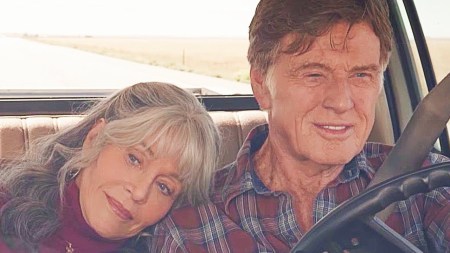
It can also be seen in the quiet isolation of characters such as Marilla Cuthbert at the beginning of Anne of Green Gables.
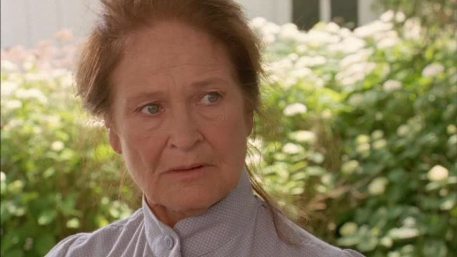
There is even a bit of the Crone in Taika Waititi’s tale of the orphan boy and his extremely cranky and unwilling foster father in Hunt for the Wilderpeople.

Whether symbolically to at least some degree or utterly realistically, the Crone’s journey is a descent into the Underworld. She pays her penny to the ferryman, crosses the River Styx, and goes to give Death a good talking to—while hopefully keeping her headstrong young charge from doing anything too stupid.

Walking on Water by Madeleine L’Engle (affiliate link)
It’s a tale that has fully as much scope for hilarity as for heaviness. But it is fundamentally a heavy theme—a confrontation with the final antagonist against whom all humans instinctively struggle and, if the arc completes, a recognition that Death may not have been what we always believed. In Walking on Water, Madeleine L’Engle muses:
…this land of death is dark and frightening. No matter how deep the faith, we each have to walk the lonesome valley; we each have to walk it all alone. The world tempts us to draw back, tempts us to believe we will not have to take this test. We are tempted to try to avoid not only our own suffering but also that of our fellow human beings, the suffering of the world, which is part of our own suffering. But if we draw back from it (and we are free to do so), Kafka reminds us that “it may be that this very holding back is the one evil you could have avoided.”
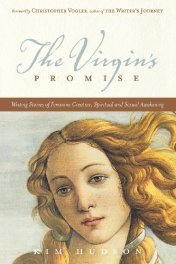
The Virgin’s Promise by Kim Hudson (affiliate link)
In The Virgin’s Promise, Kim Hudson speaks of the Maiden’s Third Plot Point beat as “Wandering in the Wilderness.” I love this term not just for the Maiden but as an emotionally resonant description of all Third Plot Point experiences, including the entirety of the Crone Arc itself.
Estés describes this “wandering in the wilderness” thus:
Theme: Choosing Descent and Return
Women in this stage often begin to feel both desperate and adamant to go on this inward journey, no matter what. And so they do, as they leave one life for another, or one stage of life for another, or sometimes even one lover for no other lover than themselves. Progressing from adolescence to young womanhood, or from married woman to spinster, or from mid-age to older, crossing over the crone line, setting out wounded but with one’s own new value system—that is death and resurgence. Leaving a relationship or the home of one’s parents, leaving behind outmoded values, becoming one’s own person, and sometimes, driving deep into the wildlands because one just must, all these are the fortune of the descent.
So off we go down into a different light, under a different sky, with unfamiliar ground beneath our boots. And yet we go vulnerably, for we have no grasping, no holding on to, no clinging to, no knowing—for we have no hands.

The Hero With a Thousand Faces Joseph Campbell (affiliate link)
The Crone’s journey is perhaps the most terrifying of all the arcs. But at the nadir of her descent, there is the opportunity for the greatest riches of all. In The Hero With a Thousand Faces, Joseph Campbell describes this Third Plot Point state:
The adventure of the hero represents the moment in his life when he achieved illumination—the nuclear moment when, while still alive, he found and opened the road to the light beyond the dark walls of our living death.
In the end, the Crone’s true transformation is not the decision to Die, as it was for the King. Rather, her crucial decision is to Live again—to rise up and leave the Underworld rather than accept the temptation of old age’s slow, resigned, comfortable descent into Nothing. In so rising, she symbolically raises the entire Kingdom with her—if not directly at least by revealing the possibility and the way. She goes to Death seeking an enemy, but in the end is surprised to find, if not a friend, then at least not an enemy.
Estés:
…the descent will nourish even though it is dark, even though one feels one has lost one’s way. Even in the midst of not knowing, not seeing, “wandering blind,” there is a “Something,” an inordinately present “Someone” who keeps pace.
The Crone’s Moment of Truth brings the revelation that she can “seek ye this day Life and not Death.” But not until the end of her story, when she fully rejects the Lie that Death is something to be defeated rather than embraced will she comprehend that indeed Death is Life—and become the Mage.
Key Points of the Crone ArcFor easy reference and comparison, I will be sharing some scannable summations of each arc’s key points:
Crone’s Story: A Pilgrimage.
Crone Arc: Elder to Sage (Uncanny World to Underworld)
Crone’s Symbolic Setting: Underworld
Crone’s Lie vs. Truth: Death vs. Life
“All life ends in death.” versus “Life is Death and Death is Life.”
Crone’s Initial Motto: “We, the accepting.”

Spiral Dynamics by Don Edward Beck and Christopher C. Cowan (affiliate link)
(This is via Spiral Dynamics’ “Green” Meme. If you’re not familiar with Spiral Dynamics, this probably won’t mean anything, but I was fascinated to realize that the six positive archetypal arcs line up perfectly with the “memes” of human development as found in the theory of Spiral Dynamics.)
Crone’s Archetypal Antagonist: Death Blight
Crone ’ s Relationship to Own Negative Shadow Archetypes:
Either Hermit finally accepts her Perception in order to grow into Wisdom.
Or Wicked Witch learns to submit her Perception to the truths of greater Wisdom.
Crone’s Relationship to Subsequent Shadow Archetypes as Represented by Other Characters:
Invigorates Miser or destroys Sorcerer through her wisdom.
The Beats of the Crone Character ArcFollowing are the structural beats of the Crone Arc. I am using allegorical language in keeping with the tradition of the Hero’s Journey (and honestly because it’s so powerful). However, it is important to remember that the language is merely symbolic. Although in this case the Crone usually will be an older person in some sense, none of the other mentioned archetypes or settings need to be interpreted literally.
This is merely a general structure that can be used to recognize and strengthen Crone Arcs in any type of story. Although I have interpreted the Crone Arc through the beats of classic story structure, it doesn’t necessarily have to line up this perfectly. A story can be a Crone Arc without presenting all of these beats in exactly this order.
As with all of the archetypes, the Crone can manifest within anyone’s life at any time, on a smaller scale. For example, any time a younger person faces as existential crisis—such as a mid-life crisis—they are very likely undergoing a Crone “subplot” as part of one of their larger arcs (i.e., because the Crone represents the Third Plot Point, she is always present, in some capacity, at the Third Plot Point of any of the previous arcs).
1st ACT: Uncanny WorldBeginning: Lure of Retirement
The Crone lives alone in a hut on the edge of the village. She is retired from public life and service, and although her former subjects may approach her for guidance as an Elder, she does not particularly encourage it. She is grumpy, worn, and hobbled by old age.
However, in completing the previous King Arc and crossing the last threshold into her Third Act, she broadened her understanding of the world beyond that of the temporal and into an acceptance of a greater spiritual realm. She works within that realm, making remedies and tinctures for herself and for those who might dare to ask for her help.
She’s not exactly misanthropic, but she is deeply introverted, processing her transformation from King to Crone, from youth and power to old age and numinousness. She’s retired. She’s not entirely happy about it, but she has accepted it as unavoidable.
Nevertheless, that acceptance has nudged her in the direction of lethargy. Even as she mourns the end of her youthful Second Act, she also feels like she’s earned her retirement. She’s old and tired; she’s accomplished more in her life than she ever knew possible. Rather than properly mourn her mortality and transform, she is tempted to just lie down and give up until Death comes to take her.
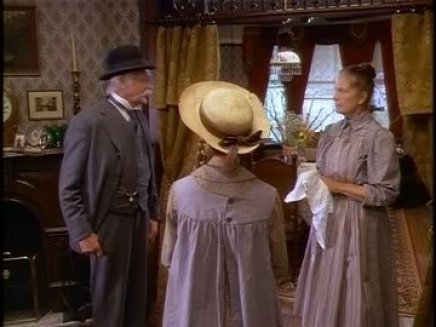
In the beginning of Anne of Green Gables, Marilla Cuthbert is a sullen, unhappy woman who doesn’t even realize how she has cut herself off from life.
Inciting Event: The Dream of Death
The Crone dreams a premonition about an imbalance in the Life and Death Forces. Death is coming to blight the land—either directly through a pestilence or apocalyptic event or indirectly through some sort of death culture. The choice to live and be alive is about to become very challenging for the world.
The Kingdom may be experiencing its first hint of this coming Blight. Most of the world will not recognize it for what it is (some even championing its advent) because they lack the spiritual insight of an Elder to discern its true malignant nature.
A Hero or King may come to the Crone seeking guidance (although not really understanding what it is they truly seek). She is resistant to rejoining the struggles of the larger Kingdom. She might give them a hint of the truth, but she shoos them away, not wanting to be bothered—even though her heart is heavy with her own fear of Death.
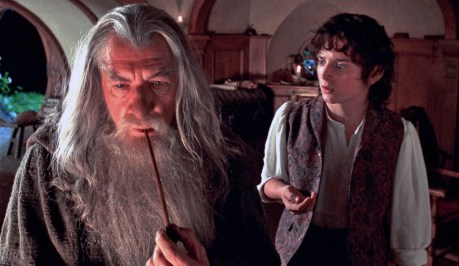
In The Fellowship of the Ring, Gandalf the Grey begins to suspect the true malignant nature of Bilbo’s ring after Frodo inherits it.
2ND ACT: UnderworldFirst Plot Point: Boards the Ferry
The Crone is drawn out from the retirement of her hut, perhaps by her Hero apprentice, perhaps by the entreaty of the King, or perhaps by a sign in her dreams. Grumpily, she agrees to go investigate, even though she still thinks it’s a waste of time. Who can defeat Death, after all? Certainly, not her—in all her feebleness.
But whether she admits it or not, hope sparks in her heart—maybe Death can be defeated. Her resignation also leads her to accept that, since she is old and about to die anyway, she might as well see about doing one more good turn for “the grandchildren.” Her love, symbolic or actual, for the Hero might be what finally prompts her to go forth to the River Styx and wait for the Ferryman. She leaves behind the Kingdom and enters the Underworld, where she intends to see what this is all about and to try whatever tricks she may to delay Death.

In Howl’s Moving Castle (which is a brilliant Crone-Arc-within-a-Maiden-Arc), Grandma Sophie treks into the Waste to try to regain her youth, enters Howl’s Moving Castle, and ends up involved in freeing the Kingdom from a malignant war.
First Pinch Point: Death Is Not Fooled by Her Little Tricks
In the Underworld, the Crone hobbles along, presenting (and mostly believing) herself as a harmless, helpless old woman. But she proves herself canny. Her small magic tricks, such as they are, help her past her various obstacles on her way to discovering the source of the Death Blight.
But Death is not fooled, and neither is the Sorcerer/Miser (if there is a human antagonist causing the Blight). Emboldened by her success thus far, she tries one trick too many and is thwarted by a discovery of her true weakness. She is startled, because the weakness proves to be one of insight and perception rather than the physical weaknesses she has identified with. She becomes even more frightened to a certain degree, but she is also intrigued: her understanding is broadening; she has glimpsed the true power available to her.

In The Hunt for the Wilderpeople, Hec learns he is wanted by the authorities for “kidnapping” his foster son (who, in fact, he has thus far desperately wanted to get shed of).
Midpoint: Chooses to Seek Life
As the Death Blight descends upon the Kingdom, the Crone must make a choice: will she give up and return to her hut (or allow herself to simply be overtaken by nullity)? Or will she find the strength, courage, and liveliness to rise again, but in a new capacity—not a King and not a Crone, but the beginnings of a Mage?
She chooses Life, even though at this point that means fully facing her fear of Death. She chooses to rise up and stand against the Blight. She uses all her wily tricks to resist it. The Sorcerer is startled, both that she dares to present herself as an antagonist and also that she has the power to make any kind of dent. He does not take her as a serious threat, but he does fully notice her as a spiritual power in her own right. He mostly wins the battle, but thanks to her choice, he is at least forced to pull back for a moment to reconsider his next move.
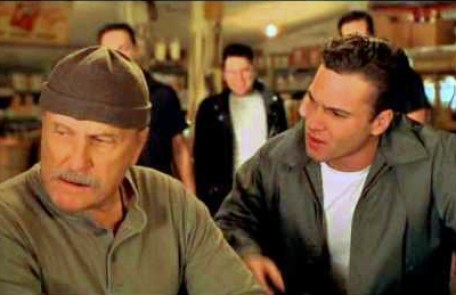
In Secondhand Lions, Hub proves that “old age and treachery will always beat youth and exuberance” when he handily defeats a group of young bullies.
Second Pinch Point: Temptation
The Crone may guide the Hero, the Queen, and the King in erecting defenses. But she stands apart from the true struggle, working her magic behind the scenes, discovering her true Life power. She is confronted—perhaps in the guise of the evil Sorcerer or perhaps by the neutral Death force—with a temptation. Now that she has chosen Life over Death, she becomes even more determined to live and not die.
The tempter offers that she might become immortal: Death will never touch her. She intuits there is a great danger to this supposed gift, even though she does not yet fully grasp the truth that Death is Life and Life is Death. She does, however, understand that Death is important—that however it may frighten her, its sheer necessity means it cannot be a wholly malignant force. She also inherently mistrusts the tempter, even as he promises that she will gain such power from this choice that she can save the Kingdom and stop Death (essentially becoming the Sorcerer). She doesn’t partake of the fruit and sends away the messenger, but she keeps the apple in her pocket—undecided about her proper course.

In Iron Lady, an elderly Margaret Thatcher (suffering from dementia) is taunted by the “ghost” of her dead husband, but she refuses to “let him go.”
3rd ACTFalse Victory: Seeks Physical Immortality
The Kingdom is forced to a dire point. The young people about whom the Crone cares (particularly the Hero) are threatened, perhaps as a result of their own mistakes. She becomes very angry—both because of the suffering caused by Death and its threats, but also at the young people as well—their stupidity and their clear inability to be trusted with the Life of the Kingdom. She knows it is time to fully seek her power, but she does so by succumbing to the promise of physical immortality. She doesn’t complete the process, but her choice is enough to unleash the darkness.

In Up, Carl’s house (symbolizing his dead wife) is set on fire, and he has a meltdown in which he alienates and endangers his young Hero companion Russell.
Third Plot Point: Death Prevails
Empowered, the Sorcerer lets loose the Blight upon the Kingdom. The Angel of Death descends; Life begins not to be blotted out as the Crone feared—but to be overtaken by Death: zombified. The lines between Life and Death blur, and the horror is greater than if Death itself had prevailed. The Crone is aghast at her choice, recognizing that she was the one who skewed the balance of light and dark, Life and Death.
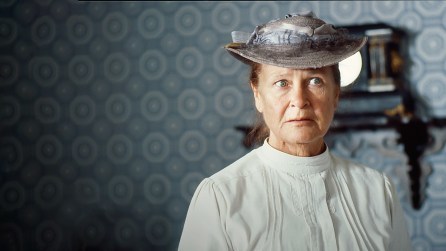
In Anne of Green Gables, Marilla realizes, on the eve of sending Anne back to the orphanage for stealing her brooch, that Anne was in fact innocent.
Climax: Embraces Death
The Crone is deeply humbled. She casts away the immortal power she has been offered. She accepts and embraces Death, not as an enemy but as the lover of Life. Life cannot exist without Death, just as the night cannot be without the day. She submits herself to the beautiful transformation of life. She does this with some hope of rectifying her mistakes, but largely she does it in total humility, simply awed and prostrate before the intolerable light of truth. She walks willingly through Death’s door to meet her fate.
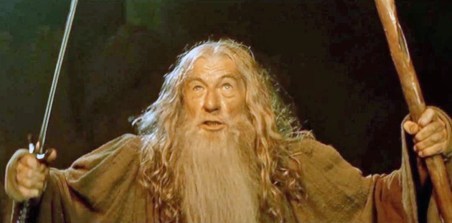
In Fellowship of the Ring, Gandalf the Grey sacrifices himself to the Balrog (“You shall not pass!”) in order to salvage the rest of the Fellowship.
Climactic Moment: Death Transformed
Her wisdom transforms her from the mortal and feeble Crone into a powerful Mage. Death, now that it has been seen as beautiful through her eyes, is itself transformed. She has the power to thwart the Sorcerer and to restore the balance of Life and Death, lifting the Blight from the Kingdom even though she still cannot banish Death.
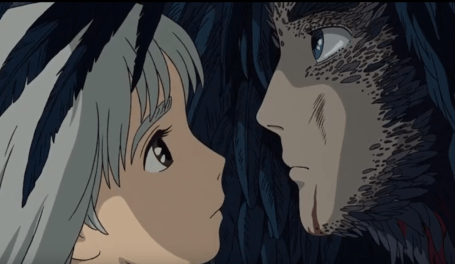
In Howl’s Moving Castle, Sophie (who has slowly regained her youth) rescues Howl from his monstrous fate.
Resolution: Reintegrates Into Renewed Kingdom
The Kingdom doesn’t fully understand what happened. They only know the Crone emerged from the Underworld, not only resurrected but transformed. They are in awe of her and more than a little frightened. They recognize in her a great new power, which they both trust and fear. They are happy that the Blight has lifted, even though they might be a little confused or even disgruntled that she did not end Death altogether. But she is wise and calm. She just smiles and does not tell them truths they are not ready to hear.
She is formally reintegrated into a respected role in the Kingdom, but even though she leaves her hut behind, it is not to return to the palace. Rather, she embarks on a mission that will take her all around the world as the Mage (which we will discuss next week).

At the end of Iron Lady, Margaret lets go of her hallucinations of her dead husband and surprises her daughter by “returning to the land of the living.”
Examples of the Crone ArcExamples of the Crone Arc include the following. Click on the links for structural analyses.
Sophie Hatter in Howl’s Moving Castle Elderly Margaret Thatcher in The Iron Lady Gandalf the Gray in The Fellowship of the Ring Hub McCann in Secondhand Lions Hec in The Hunt for the WilderpeopleLouis Waters and Addie Moore in Our Souls at NightHenry Dailey in The Black StallionMarilla and Matthew Cuthbert in Anne of Green GablesHepzibah in Lantern HillCarl Fredricksen in UpStay Tuned: Next week, we will study the Mage Arc.
Related Posts:
Story Theory and the Quest for MeaningAn Introduction to Archetypal StoriesArchetypal Character Arcs: A New SeriesThe Maiden ArcThe Hero ArcThe Queen ArcThe King ArcWordplayers, tell me your opinions! Can you think of any further examples of stories that feature the Crone Arc? Tell me in the comments!Click the “Play” button to Listen to Audio Version (or subscribe to the Helping Writers Become Authors podcast in Apple Podcast or Amazon Music).
___
Love Helping Writers Become Authors? You can now become a patron. (Huge thanks to those of you who are already part of my Patreon family!)The post Archetypal Character Arcs, Pt. 6: The Crone Arc appeared first on Helping Writers Become Authors.
March 8, 2021
Archetypal Character Arcs, Pt. 5: The King Arc
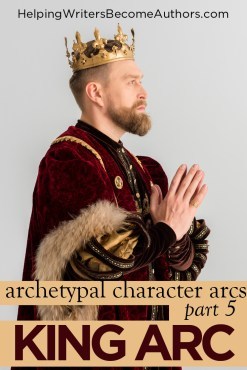 If we view the human life and thus the six archetypal character arcs of the “life arcs” as taking on the classic story-structure format of Three Acts, then it is no coincidence that the all-important Midpoint marks the transition from the Queen Arc to the King Arc.
If we view the human life and thus the six archetypal character arcs of the “life arcs” as taking on the classic story-structure format of Three Acts, then it is no coincidence that the all-important Midpoint marks the transition from the Queen Arc to the King Arc.
In any story, the structural Midpoint represents in many ways the turning point of the entire story. Within the plot it signifies a shift out of the “reactive” phase, in which the protagonist has been distracted by the Lie and by surface conflicts. Equally, it signifies the shift into the “active” phase, in which the protagonist begins to recognize what the conflict is really about and what antagonist he is really confronting. Thematically, this is represented by a Moment of Truth, in which the protagonist grasps the central Truth of his story (while not yet fully releasing or overcoming his Lie).
In our examination of the six life arcs, the middle two arcs of the cycle, comprising the “Second Act,” are the Queen (discussed last week) and the King. The Queen Arc ends with the protagonist essentially having become the King. Although not necessarily glimpsed within the Queen Arc itself, this signifies a total shift within the overall archetypal story. Up to this point, the arcs have represented the first half of life’s concerns with the exterior world—with one’s relationship to self, others, love, and power from both positions of subordination and of authority.
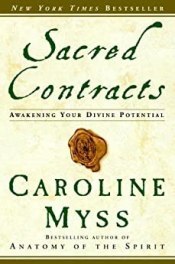
Sacred Contracts by Caroline Myss (affiliate link)
Obviously, anyone inhabiting the King archetype has reached the apex of temporal life. As Caroline Myss puts it in Sacred Contracts:
The King is an archetype of major proportions, representing the height of temporal male power and authority….
From here, it would seem there is nowhere to go but down. In some ways this is true. From this point, the character descends (and the word is symbolically important) into the second half of life—into old age, crippling mortality, and eventual death. From here, temporal power wanes. Whether the character will rise to the even greater (and in some ways more powerful) challenges of the Third Act of life depend on his ability to successfully fulfill his final charge as King.
The King Arc, then, is about a character at the height of temporal power who is faced with the realization that the greatest good he can do for his beloved Kingdom—which he has so far proven himself so worthy to rule—is to sacrifice himself and surrender the throne. His arc quite literally ends with the traditional low moment of the Third Plot Point as the transition from life’s Second Act to the Third Act.
Reminders: Once again, before we officially get started, I want to emphasize two important reminders that hold true for all of the arcs we’ll be studying.
1. The arcs are alternately characterized as feminine and masculine. Primarily, this indicates the ebb and flow between integration and individuation, among other qualities. Together, all six life arcs create a progression that can be found in any human life (provided we complete our early arcs in order to reach the later arcs with a proper foundation). In short, although I will use feminine pronouns for the feminine arcs and masculine pronouns for the masculine arcs, the protagonist of these stories can be of any gender.
2. Because these archetypes represent Positive-Change Arcs, they are therefore primarily about change. The archetype in which the protagonist begins the story will not be the archetype in which he ends the story. He will have arced into the subsequent archetype. The King Arc, therefore, is not about becoming the King archetype, but rather arcing out of it into the beginnings of the Crone Arc—and so on.
The King Arc: Becoming the SacrificeThe completion of the Queen Arc signified the rise of a worthy and aligned Ruler. Now represented as the King, the character is one who wields immense power. Symbolically, he is the ruler of a vast and successful empire. He is a good leader, possessing both the maturity to manage the Kingdom (in opposition to his passive counter-archetype the Puppet) and a true compassion for and understanding of his people (in opposition to the aggressive counter-archetype of the Tyrant).
But times are changing. Not only does he grow older, creating the need to prepare a worthy successor, but the Kingdom itself is about to face threats heretofore unheard of. Throughout his life up to this point, the King has proven his ability to courageously and successfully face down all manner of temporal antagonists. But this time the threat proves to be not of this world. A great and mysterious Cataclysm descends—and as the King will soon learn, it cannot be fully defeated by the might of his arm, but can only be quenched if he is willing to surrender all his power and sacrifice himself as propitiation.
Stakes: Glimpsing the Beginning of the EndWhen a character has everything, it is always clear he has everything to lose. For the King, the stakes are no longer about whether or not he will gain what he must gain in order to move forward in life. Rather, for the first time, they are about whether or not he can understand that he has reached the beginning of the end of his own life and certainly his own temporal power. Can he let go and make the transition gracefully? Or will he hold on, in all futility, and devolve into the Tyrant?
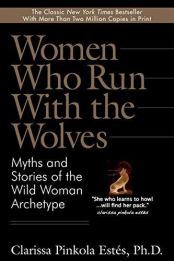
Women Who Run With the Wolves by Clarissa Pinkola Estes (affiliate link)
In Women Who Run With the Wolves, Clarissa Pinkola Estés speaks about a journey that is surprisingly inherent within the King archetype:
The king represents a trove of knowledge…. He carries the ability to take inner knowing out into the world and put it into practice, without mincing, muttering, or apologizing. [H]e is involved in the mechanisms of vital process of the psyche: the failing, dying, and return of consciousness. Later in the story … he will undergo a kind of death that will transform him from a civilized king to a wild one…. In psychic terms this means that the old central attitudes of the psyche will die as the psyche learns more. The old attitudes will be replaced by either new or renewed viewpoints concerning just about everything….
Although the plot in a King Arc can be absolutely epic, it is a fundamentally spiritual arc—more so than any that have preceded it. The protagonist is encountering life’s second great threshold, or Door of No Return, which parallels the Hero’s First Plot Point threshold. For the King, this threshold is truly crossed at his own story’s Third Plot Point when he exits his temporal realm of power and begins his descent into what will be the spiritual realm of the Crone.

The Hero With a Thousand Faces Joseph Campbell (affiliate link)
In The Hero With a Thousand Faces, Joseph Campbell talks about what can be seen as this Third Plot Point threshold for the King:
Antagonist: Confronting the Monsters at the DoorThe ordeal is a deepening of the problem of the first threshold and the question is still in balance. Can the ego put itself to death? … The original departure into the land of trials [i.e., the Hero’s First Plot Point] represented only the beginning of the long and really perilous path of initiatory conquests and moments of illumination.
Just as the Hero had to fight a Dragon to protect those he loved, the King must sacrifice himself to the Cataclysm to safeguard the Kingdom. Just like old Beowulf the King, at the end of his saga, the King archetype offers himself to preserve and safeguard the Kingdom.
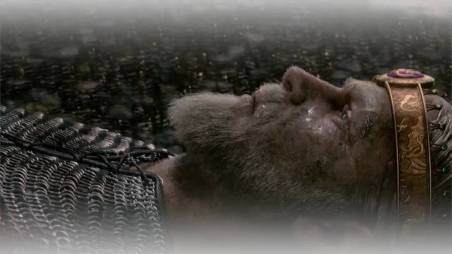
Although the Cataclysm may be initiated by other characters representing negative archetypes (such as the Tyrant, Witch, or Sorcerer—to be discussed later), the Cataclysm itself isn’t necessarily evil in nature. Rather, as a force that must be appeased, it specifically represents the demands of Life and Death. The King cannot retain his power forever; to do so goes against all natural laws. If he is to continue his life’s journey in health and grace—and for the good of all—he must accept that.
Symbolically, the King surrenders into his Third Act as a ritual sacrifice of sorts. This demand for his “death” may look evil and horrible to the younger eyes of the Maidens, Heroes, and Queens. It may even seem so to the King himself to some extent since he does not yet understand the truths of the Third Act. However, as with all the archetypes, what this represents is simply the natural progression of all things.
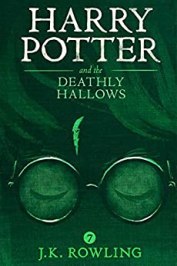
Harry Potter and the Deathly Hallows by J.K. Rowling (affiliate link)
The King surrenders himself to Death expecting nothing less, but he will be surprised (although not necessarily elated) to discover that this is not the end. Just as the Third Plot Point always symbolizes Death, it also always symbolizes (or at least offers the potential for) Rebirth. And so the King will come to glimpse the truth of life’s Third Act, which can be spoken of in J.K. Rowling’s beautiful line from Harry Potter and the Deathly Hallows:
And then he greeted Death as an old friend, and went with him gladly, and, equals, they departed this life.
In short, the King will end by discovering that this great enemy he has been facing in the form of the Cataclysm has, all along, been his teacher.
Theme: Sacrificing a King for a KingdomAt the Midpoint of his arc, the King will come to his Moment of Truth that the temporal battle on which his Maidens, Heroes, and Queens are focused is in fact not the victory they need. Within this realization—and ultimately his true heart in understanding that a leader is really a servant to his people—he reveals himself as a worthy propitiation against this supernatural threat.
In essence, regardless of any opposing human characters, the true antagonist in the King Arc is a supernatural phenomenon—an unbalanced force that must be appeased. Campbell references ancient traditions regarding the “death of a king,” but which just as importantly speak to the necessity of Old Age passing the torch of leadership on to the New Young:
Key Points of the King ArcThis is the sacrifice that King Minos refused when he withheld the bull from Poseidon. As [Sir James G.] Frazer has shown, ritual regicide was a general tradition in the ancient world. “In Southern India,” he writes, “the king’s reign and life terminated with the revolution of the planet Jupiter round the sun. In Greece, on the other hand, the king’s fate seems to have hung in the balance at the end of every eight years…. Without being unduly rash we may surmise that the tribute of seven youths and seven maidens whom the Athenians were bound to send to Minos every eight years had some connexion [sic] with the renewal of the king’s power for another octennial cycle.” The bull sacrifice required of King Minos implied that he would sacrifice himself, according to the pattern of the inherited tradition, at the close of his eight-year term. But he seems to have offered, instead, the substitute of the Athenian youths and maidens. That perhaps is how the divine Minos became the monster Minotaur, the self-annihilate king, the tyrant Holdfast, and the hieratic state, wherein every man enacts his role, the merchant empire, wherein each is out for himself.
For easy reference and comparison, I will be sharing some scannable summations of each arc’s key points:
King’s Story: An Awakening.
King Arc: Leader to Elder (moves from Regal World to Preternatural World)
King’s Symbolic Setting: Empire
King’s Lie vs. Truth: Strength vs. Surrender
“Physical strength is the pinnacle of human achievement.” versus “Spiritual strength requires me to relinquish my physical strength.”’
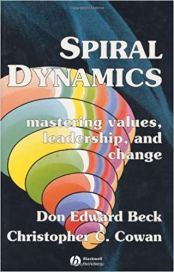
Spiral Dynamics by Don Edward Beck and Christopher C. Cowan (affiliate link)
King’s Initial Motto: “I, the capable.”
(This is via Spiral Dynamics’ “Orange” Meme. If you’re not familiar with Spiral Dynamics, this probably won’t mean anything, but I was fascinated to realize that the six positive archetypal arcs line up perfectly with the “memes” of human development as found in the theory of Spiral Dynamics.)
King’s Archetypal Antagonist: Cataclysm
King ’ s Relationship to Own Negative Shadow Archetypes:
Either Puppet finally wields his Power out of a growing Perception.
Or Tyrant learns to submit his Power to the bigger picture of Perception.
King’s Relationship to Subsequent Shadow Archetypes as Represented by Other Characters: Rallies Hermit or defeats Witch with his sacrifice.
The Beats of the King Character ArcFollowing are the structural beats of the King Arc. I am using allegorical language in keeping with the tradition of the Hero’s Journey (and honestly because it’s so powerful). However, it is important to remember that the language is merely symbolic. Although in this case the King usually will be a leader in some sense, none of the other mentioned archetypes or settings need to be interpreted literally.
This is merely a general structure that can be used to recognize and strengthen King Arcs in any type of story. Although I have interpreted the King Arc through the beats of classic story structure, it doesn’t necessarily have to line up this perfectly. A story can be a King Arc without presenting all of these beats in exactly this order.
1st ACT: Regal WorldBeginning: Replete But Vaguely Unsatisfied
The King has spent his reign fruitfully and faithfully, building the Kingdom into a powerful Empire. He is proud of how he cares for his people, knowing he has brought peace and prosperity through his wise reign. But even as he has grown complacent with his own power and wisdom, he has begun to sense, in the rising twilight of his years, that something is about to change within him—that it must change, that he cannot continue forever in the pleasing purpose of his power.
The world around him has grown up as well. His children/subjects are blooming into maturity, looking trustingly to him for guidance but also beginning to chafe against authority in their growing need for their own personal autonomy. It is a time of peak ripeness in the Kingdom—everything is good, but it also feels like the calm before the storm.
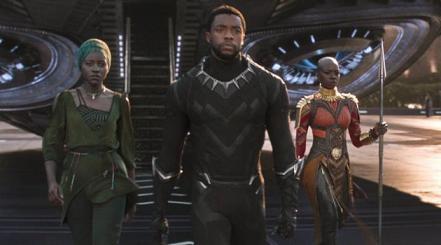
In the beginning of Black Panther, de facto King T’Challa returns to his blessed and peaceful kingdom of Wakanda.
Inciting Event: Plea for Action Against Unprecedented Cataclysm
News arrives of a great Cataclysm impending upon the Kingdom. The Cataclysm is unprecedented and seems unstoppable—but the King and his subjects have faith: he has never faced something bigger than he could handle before.
One of the messengers (or perhaps a Mage acting as the King’s advisor) may insist this is totally different: it is a supernatural event. This sobers the King, but he doesn’t take it too seriously. He refuses to respond to the Cataclysm as such and decides to treat it as he would any of the physical threats he has overcome during his reign.
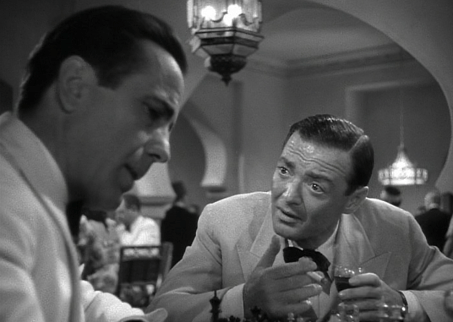
In Casablanca, Rick’s little kingdom is increasingly threatened by news of World War II’s encroachment.
2ND ACT: Preternatural WorldFirst Plot Point: Confronts Cataclysm With Administrative and Military Might
As the Cataclysm draws nearer to the heart of the kingdom, the King rides out to face it for the first time. It is not what he expected: it is of another world. But it is also not yet world-ending.
He attacks the Cataclysm with his normal methods of administrative and military might, seeming to push it back, but in fact entangling it fully with his Kingdom.
He also experiences the true threat of its power. Its eye is upon him, and it marks him in some dark way (perhaps in a physically destructive way, but certainly in a way that shifts his perspective of his “completeness” as King up to this point: he is a very small being in the face of this thing). He begins to comprehend his mortality.

Although within the complex morality presented in Princess Mononoke, Lady Eboshi is often thought of as the antagonist, she still represents a caring King archetype in her leadership of Iron Town. She does not know that in wounding the giant Boar, she is unleashing something supernatural.
First Pinch Point: Sword Breaks: The Old Methods of Success Aren ’t Working
After a series of seeming triumphs in which the King’s choices nominally work in protecting the people from the Cataclysm, everyone is shocked and sobered when the King attempts a gambit against the Cataclysm only to lose his greatest symbol of power (his “Sword”). His human might proves truly fallible against this inexplicable threat. Doubt of his ability to protect them (and rule them) begins to creep into his subjects’ minds. Doubt begins to creep into his as well.

In The Avengers: Infinity War, Tony watches helplessly as everyone around him turns to dust when Thanos snaps his fingers.
Midpoint: Witnesses True Supernatural Nature of Cataclysm
The King confronts the Cataclysm with a full show of his kingly might—and is stunned in the midst of it all to realize that his courage and his power mean nothing in the face of this unearthly force. He experiences a profound Moment of Truth, in which he realizes the Cataclysm cannot be faced, much less overcome, as he has overcome all other enemies: with mortal might. It is a supernatural force, and it will require a supernatural propitiation.
Most of his subjects do not see this. All they see is that their King has proven himself impotent against the storm. The entire Kingdom is shaken, as their King seems to withdraw from before this grave threat—not only impotent against it, but seemingly overcome by it.
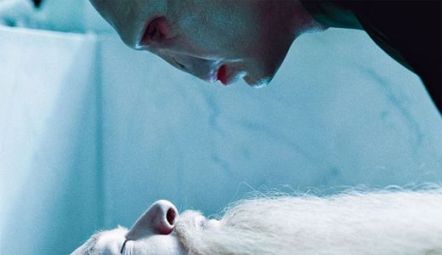
In The Deathly Hallows, Harry’s realization that Voldemort is after the all-powerful Elder Wand signifies that Harry is not just opposing Voldemort but, in essence, Death itself.
Second Pinch Point: Rebellion: Subjects Lose Faith
The King—probably with the help of a Mage Mentor—begins to understand that the only way to stop the Cataclysm is to surrender his crown (and perhaps his life). His time as an earthly ruler is finished; it is time for him to give up his might, give up his youth, give up his strength, give up even his pride. He must begin the descent into the Underworld, accepting old age and death and humbling himself into the Crone. He takes a few steps in this direction, beginning to shed his royal vestments in his preoccupation with understanding this supernatural antagonist.
His subjects witness this with increasing concern. They begin to lose faith in him as the King. The more unfaithful and aggressive among them (Bullies and Sorceresses) push back with a semi-successful coup. The King and his plans are ultimately protected only by those who do remain faithful: the Heroes and Queens who also find themselves growing in maturity through this trial. Whether the King is captured or whether he goes into hiding, he is now separated from the majority of his kingly resources.
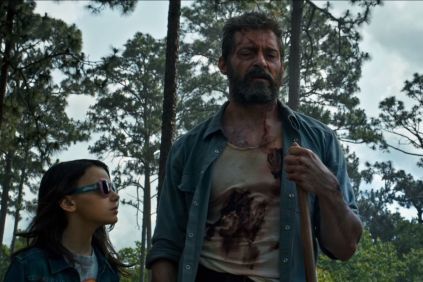
In Logan, after barely escaping his own clone at the Munson Farm, Logan’s increasing inability to heal his own wounds becomes obvious.
3rd ACTFalse Victory: Tries to Stop the Cataclysm With Kingly Might
In response to the pleas of his followers and the demands of the rebels, the King caves to his own deep desire to avoid sacrificing himself. He seizes a slight chance to stop the Cataclysm through physical means. He meets it “in the field” to do battle. He succeeds in some small measure, but the Cataclysm is not satisfied.
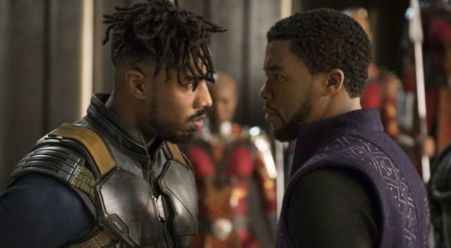
In Black Panther, T’Challa accepts Erik’s challenge to fight for the throne, willing to sacrifice his body to the mortal antagonist but not yet ready to face the true Cataclysm of the deeper spiritual truth about what brought Erik to Wakanda.
Third Plot Point: Kingdom on the Brink
The Kingdom is now in true peril. The King’s might could not stop the Cataclysm. His subjects reveal their true colors, some proving to be scoundrels, others proving their worth as his true successors. He is heartbroken by his subjects’ suffering, even as he is agonized by the unavoidable necessity of his own sacrifice. Even as his loyal subjects suggest ways to try again in combating the Cataclysm, the King realizes what he must do.

In Braveheart, William Wallace is betrayed by Robert the Bruce at the Battle of Falkirk, leading to defeat and capture.
Climax: Bequeaths the Crown, Offers Self as Propitiation
The King passes his Crown to his successor. At first, his subjects don’t understand that he intends to offer himself as propitiation to the Cataclysm. When they do realize his intentions, they are horrified; they do not understand the supernatural aspect of the Cataclysm and do not understand how his sacrifice can help them. They try to stop him, but he will not be deterred.
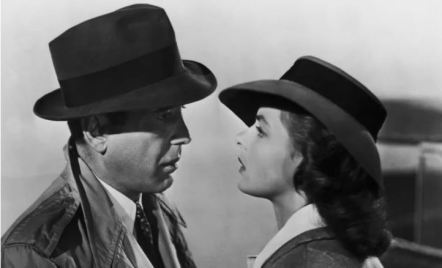
In Casablanca, recognizing the larger import of World War II, Rick sacrifices himself by sending his love Ilsa away with her freedom-fighter husband, while he himself enters the fray.
Climactic Moment: Sacrifices to Ensure Kingdom ’s Survival
The King, divested of his royalty, surrenders to the Cataclysm as a mere mortal—an old man who is willing to face death. His sacrifice is accepted, and the Cataclysm ends.

In Avengers: Endgame, Tony Stark accepts the final burden of defeating Thanos (a Greek word which, not so coincidentally, means “Death”). He snaps his fingers while wearing the Infinity Gauntlet, knowing it will mean his own end.
Resolution: Departs Liberated Kingdom
The King departs the Kingdom, no longer the King but the Crone. He may literally die, or he may simply take on the Crone identity and leave the Kingdom to his successors. The Kingdom is at peace, free of the Cataclysm and prepared to begin a new era of peace and prosperity under a new King who was trained by the old one.
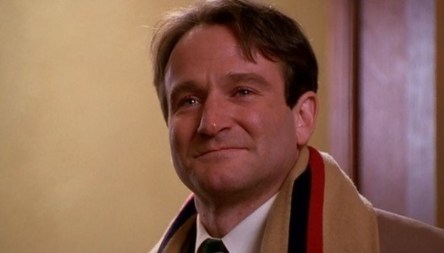
In Dead Poets Society, after John Keating is fired from his teaching job, he leaves the school, sadly, but knowing he has transformed the lives of his students.
Examples of the King ArcExamples of the King Arc include the following. Click on the links for structural analyses.
Tony Stark in Avengers: EndgameLady Eboshi in Princess Mononoke Beowulf in BeowulfRick in CasablancaMargaret Thatcher in Iron Lady (which offers just about all the life-arc archetypes, from Hero to Crone)T’Challa in Black Panther William Wallace in Braveheart Harry Potter in The Deathly Hallows John Keating in Dead Poets SocietyMarshall Pentecost in Pacific Rim Logan in LoganStay Tuned: Next week, we will study the Crone Arc.
Related Posts:
Story Theory and the Quest for MeaningAn Introduction to Archetypal StoriesArchetypal Character Arcs: A New SeriesThe Maiden ArcThe Hero ArcThe Queen ArcWordplayers, tell me your opinions! Can you think of any further examples of stories that feature the King Arc? Tell me in the comments!Click the “Play” button to Listen to Audio Version (or subscribe to the Helping Writers Become Authors podcast in Apple Podcast or Amazon Music).
___
Love Helping Writers Become Authors? You can now become a patron. (Huge thanks to those of you who are already part of my Patreon family!)The post Archetypal Character Arcs, Pt. 5: The King Arc appeared first on Helping Writers Become Authors.
March 1, 2021
Archetypal Character Arcs, Pt. 4: The Queen Arc
 What happens after the happily ever after? This is a question we often ask but seldom explore. As discussed in previous weeks, the two archetypal character arcs that begin the cycle of six “life arcs” are the Maiden and the Hero. Together, they account for a great majority of the archetypal stories we read and view, and together they act to resolve the protagonist’s initiation into adulthood—which often ends “happily” with the protagonist’s re-integration into a meaningful position of work and relationship within the larger tribe or Kingdom.
What happens after the happily ever after? This is a question we often ask but seldom explore. As discussed in previous weeks, the two archetypal character arcs that begin the cycle of six “life arcs” are the Maiden and the Hero. Together, they account for a great majority of the archetypal stories we read and view, and together they act to resolve the protagonist’s initiation into adulthood—which often ends “happily” with the protagonist’s re-integration into a meaningful position of work and relationship within the larger tribe or Kingdom.
But the vague “ever after” part of the phrase is only there if we choose not to follow the character into the life arcs of the Second Act of her life. Just as the two arcs of the First Act were characterized as representing the first thirty years of the character’s life, the next two arcs can be thought of as representing the Second Act and comprising the next thirty years—approximately from the ages of thirty to sixty.
Obviously what we see represented here is a more mature phase of life—an unequivocally adult phase. The protagonist has put behind her the challenges of individuation and initiation on her way to discovering healthy relationships, building her own family, and investing herself in meaningful work. But as any of us chronologically in the Second Act can attest, the adventure is far from over.

The Virgin’s Promise by Kim Hudson (affiliate link)
The challenges of the First Act were primarily about the character’s Relationship With Self and her ability to integrate the separate parts of herself. The Second Act arcs of Queen and King are about Relationship With Others. In The Virgin’s Promise, Kim Hudson mentions the many options for how this relationship may be dramatized:
The Mother/Goddess and the Lover/King know their power and must now enter into a relationship to use their power well and gain meaning in their life. This relationship can be between a man and a woman, a mother or a father and a child, and a woman or a man and her/his community. This union brings a form of wholeness.
If the overarching theme/challenge of the First Act was Fear, that of the Second Act is Power. The Queen, particularly, is an arc about learning to responsibly accept and use one’s power in relationship and in authority. The static archetype that lives between the Hero and the Queen is that of the Parent. After returning from the Hero’s adventures of the Quest, the initiated adult settles down and starts a family, whether literally or symbolically.
But the love the Hero learned in his arc is not enough to bear up the Queen’s growing burdens of responsibility. If she is to continue her maturation and grow her abilities to defend, enable, and direct the next generation of Maidens and Heroes in their own journeys, then she must grow beyond the role of loving Parent into the true leadership of the subsequent static archetype of Ruler—and its following arc of the King.

Dreamlander (Amazon affiliate link)
For me personally, the Queen Arc has been one of the most exciting to explore. As I’ve been outlining the sequel stories to my portal fantasy Dreamlander, I’ve been challenged to ask what we all ask sooner or later, “What happens to the Hero after the Hero’s Journey?” Is it just another Hero’s Journey? Instinctively, I think we all know that true characterization demands that the sequel for any Hero must offer an even deeper journey into the protagonist’s self.
As always, before we officially get started, I want to emphasize two important reminders that hold true for all of the arcs we’ll be studying.
1. The arcs are alternately characterized as feminine and masculine. Primarily, this indicates the ebb and flow between integration and individuation, among other qualities. Together, all six life arcs create a progression that can be found in any human life (provided we complete our early arcs in order to reach the later arcs with a proper foundation). In short, although I will use feminine pronouns for the feminine arcs and masculine pronouns for the masculine arcs, the protagonist of these stories can be of any gender.
2. Because these archetypes represent Positive-Change Arcs, they are therefore primarily about change. The archetype in which the protagonist begins the story will not be the archetype in which she ends the story. She will have arced into the subsequent archetype. The Queen Arc, therefore, is not about becoming the Queen archetype, but rather arcing out of it into the beginnings of the King Arc—and so on.
The Queen Arc: Defending the KingdomThe Queen represents who the Hero has become after returning from the Quest. She represents not just someone with the capacity for heroism, but also someone with a deep connection and compassion for those she previously saved—for her family and community.
That community—her Domestic World—is a rich and joyous place, full of love and nurturing, where she has found purpose and joy in guiding the Children and the directing the Maidens. But it is easy for her to lose herself at the Hearth, so to speak. It is easy to lose herself in this loving world and in the headiness of having so many adoring dependents—her children (literal or metaphorical) with whom she deeply identifies.

The Heroine’s Journey by Gail Carringer (affiliate link)
Fortunately, as in all stories, a catalyst arrives to prompt her growth into the next phase of her life (and her children into theirs). The Kingdom comes under threat from outside forces, and the current leadership proves itself incapable of protecting her family. In her book The Heroine’s Journey—which presents a model that aligns closely with the Queen Arc—paranormal romance author Gail Carringer states:
A key moment in any Heroine’s Journey is that precipitating fracture of family that will drive her into action.
Hmm. Whatever is a Queen to do?
Stakes: Accepting the Burden of LeadershipThe Hero had to realize that Love creates meaning, but the Queen must recognize that Love isn’t enough. There must also be Order, else all is Chaos—the children will all be spoiled brats who never leave their mother’s breast, never graduate from Maiden to Hero.
And yet there is a tremendous part of her that cannot bear that her children should grow up and leave her. Like all of the positive archetypes, she stands on the narrow center point between her negative poles—the Snow Queen and the Sorceress, who are often the villainous representations of corrupted power whom the Maidens (specifically) must overcome.

Sacred Contracts by Caroline Myss (affiliate link)
Instead, the Queen must now mature away from her own needs for connection. She must mature into the comparatively lonely role of the leader, willing to entrust responsibility to her able subordinates. Part of her challenge in becoming King is letting her children grow up. Because she enjoys being Queen, she doesn’t necessarily want to become King. Relinquishing her children feels like a Death (and indeed, symbolically, is). In Sacred Contracts, Caroline Myss discusses the inherent relationship focus of this archetype:
Challenges related to control, personal authority, and leadership play a primary role in forming the lessons of personal development that are inherent to this archetype. The benevolent Queen uses her authority to protect those in her court and sees her own empowerment enhanced by her relationships and experience.
Unlike the Maiden and Hero, who resist their incumbent evolution out of fear of the Powers That Be, the Queen resists change because she is content. She likes where she’s at and feels like she’s earned it. But necessity calls. Her brood grows too big. They need guidance. They need to be released from the Home into the Kingdom and beyond. She must transform and rise up to face the threats against the Kingdom by becoming the leader the Kingdom needs. Her love must grow from enveloping and protecting to enabling and ordering.
Her fear of becoming King isn’t because she lacks the qualities—power, will, intelligence. Her fear is that in giving up on her Queen identity, she can no longer be identified with her children—or they with her. No longer can she throw herself in front of a wayward child and tell the punisher—“Take me instead.” Now she must view her children as subjects and become, instead of their shield, an impartial arbiter.
Antagonist: The Empty ThroneThe catalyst that drives the Queen into action and growth is represented by an exterior threat to the Kingdom—symbolic Invaders. But the true antagonist within her story is the Kingdom’s lack of a mature and healthy leader to combat this threat. The Queen will start out appealing to what leadership exists—only to discover the throne is, symbolically, empty. It is occupied by either a Puppet or a Tyrant, and either presents as great a threat to the Kingdom from within as does the Invader from without.
Despite her initial attempts and desires to work within the existing system, the Queen must eventually realize that the only way to protect her children is to rise up and do it herself. She does this not out of a personal need (as does the Maiden) or a desire for glory (as does the Hero), but in defense of what she loves. Carringer states:
Theme: Power in RelationshipWhile our hero tends to move toward objects and acquisitions of power (a supernatural sword, magic amulet, and so on), the heroine’s descent is precipitated by a rejection of divine power (or defined social role) as a result of a familial connection (or relationship network) being taken from her. This can also be seen as a loss of identity or it can manifest in a more concrete way, such as an actual disguise.
The Maiden and Hero Arcs evolve the character into personal responsibility. The Queen and later the King Arcs now demand that the character evolve into relational and social responsibility. No matter what “invasion” may be threatening in the story’s outer conflict, this is the central thematic focus of the Queen’s arc. Hudson says:
The Mother/Goddess, the Lover/King … represent the middle stage of life, and all face the challenge of entering into a relationship with another.
Once again, it’s important to note that the language used throughout this series is, by nature, archetypal. We speak of Queens and Kingdoms and Invaders, but these concepts can be represented just as immediately in contemporary stories with none of these trappings.
One of my favorite examples of the Queen Arc is the baseball comedy A League of Their Own, which takes place against the backdrop of the All-American Girls Professional Baseball League during World War II. In it, the protagonist Dottie (played by Geena Davis) reluctantly undertakes a Queen Arc, growing into mature leadership, cleverly outmaneuvering the threats from without that would shut down the league and the threats from poor leadership within (the alcoholic, apathetic “manager” played by Tom Hanks) to eventually demand individual responsibility from her “subjects”—the other players and particularly her Maiden-archetype younger sister.
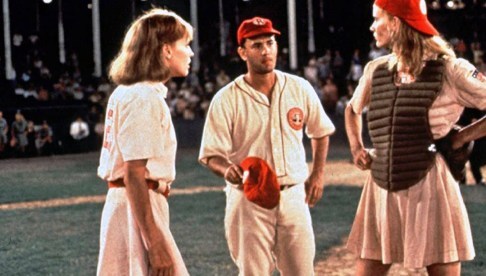
Unlike the Hero who, in order to properly fulfill his growth challenges, must win alone, the Queen’s growth arc demands she enable others to work with her. She will start out in a more Heroic mindset, wanting to do it the way she did it before and spare everyone else the conflict, but she must learn that she cannot—that she is only able to save her family by enabling them to take up arms alongside her. Carringer again:
Key Points of the Queen ArcWhen in possession of political power, the heroine acts more like a military general (or a really good general manager), getting help, recognizing the strengths in others, and doling out tasks and requests for aid accordingly. Her objective is often to build and empower in the form of community, city, family, love.
For easy reference and comparison, I will be sharing some scannable summations of each arc’s key points:
Queen’s Story: A Battle.
Queen Arc: Protector to Leader (moves from Domestic World to Monarchic World)
Queen’s Symbolic Setting: Kingdom
Queen’s Lie vs. Truth: Control vs. Leadership
“Only my loving control can protect those I love.” versus “Only wise leadership and trust in those I love can protect them and allow us all to grow.”
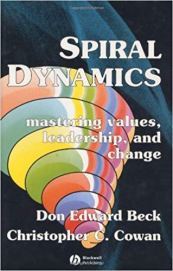
Spiral Dynamics by Don Edward Beck and Christopher C. Cowan (affiliate link)
Queen’s Initial Motto: “We, the True Believers.”
(This is via Spiral Dynamics’ “Blue” Meme. If you’re not familiar with Spiral Dynamics, this probably won’t mean anything, but I was fascinated to realize that the six positive archetypal arcs line up perfectly with the “memes” of human development as found in the theory of Spiral Dynamics.)
Queen’s Archetypal Antagonist: Invader/Tyrant
Queen ’ s Relationship to Own Negative Shadow Archetypes:
Either Snow Queen finally acts in Love for her children by accepting Responsibility.
Or Sorceress learns to submit her selfish Love to the greater love of Responsibility.
Queen’s Relationship to Subsequent Shadow Archetypes as Represented by Other Characters: Empowers Puppet or overcomes Tyrant with her power.
The Beats of the Queen Character ArcFollowing are the structural beats of the Queen Arc.
1st ACT: Domestic WorldBeginning: Dangers of Dependency
The Queen is busy and fulfilled, caring for her growing children. But she is in danger of identifying herself too much with her children’s dependency upon her and therefore of binding her children to her too tightly instead of allowing them grow up and individuate via their own Maiden Arcs.
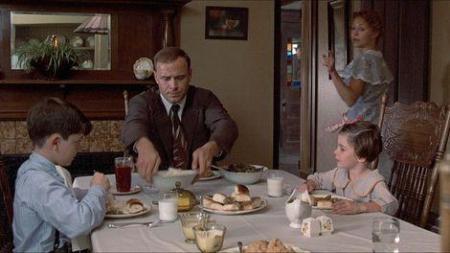
In the beginning of Places in the Heart before her husband is accidentally killed, Edna is content in her happy home as mother to her two children.
Inciting Event: Enemies at the Door
The Domestic World is threatened when enemies arrive from “without.” Unfortunately, there is no one fit to defend the Kingdom from these Invaders. It could be there is no King, or the King is incompetent and/or corrupt, or the current King is arcing into Crone (to be discussed next week) and recognizes he must name and train a successor.
Whatever the case, the King will prove unwilling or unable to defend the Kingdom from the Invaders, and the Queen’s realm will be threatened by this void of leadership. This “Call to Leadership” will be countered by a Refusal when the Queen resists immediately taking charge of her family’s defense and instead chooses to believe she can convince the existing King to do what is necessary.
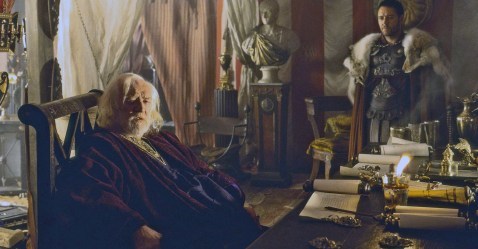
In Gladiator, when an aging Emperor Marcus Aurelius entreats Maximus to rule Rome after his passing, in order to protect it from his psychopathic son Commodus, Maximus refuses, desiring instead to return to his wife and son on his farm in Spain.
2ND ACT: Monarchic WorldFirst Plot Point: Entering the Castle
In order to entreat the King, the Queen reluctantly leaves her beloved Domestic World and enters the Monarchic World of the castle. She demands from him protection for her children. She may not immediately despair of the King’s ability to defend the Kingdom, but she accepts that she must do something herself—perhaps at the bidding the King, who is either trying to fob off his own responsibility onto her or simply fob her off.

In Elizabeth, the protagonist is crowned Queen of England, but she is not yet truly the ruler of her people. Her advisors rule the country and will not yet give her true power.
First Pinch Point: Children Clamor for Action
The Queen’s children aren’t content with her diplomatic attempts to assure their safety against the enemy. They believe in their mother more than they believe in the King, and they want her to take charge and help them defend the Hearth she has taught them to believe in and cherish. She resists this, neither wanting to leave her family for the throne, nor wanting her children to take up arms. She continues to hope and work for the King’s enablement against the Invaders.

In The Order of the Phoenix, Harry Potter secretly begins teaching other students, at their insistence, so they can form “Dumbledore’s Army” and resist Voldemort (“Invader”) and Professor Umbridge (“Tyrant”).
Midpoint: Leading the Charge
Finally, the Queen finds herself with no choice but to take charge herself and assume leadership/kingship in pushing back the Invaders. She comes to a Moment of Truth in realizing that her love alone is not enough to protect her children. More than that, she cannot rely on others (i.e., the King) to perform the necessary acts of restoring order to the Kingdom. But she cannot win alone; she must lead a charge made up of her subjects. She agrees to lead her children to battle.
The children wish to fight for their mother and make her King—but they also begin to fear that her growing power will trap them in childhood (as it will if she fails to arc into the King and instead slides into one of the negative archetypes of Snow Queen or Sorceress). If she does not let them fight with her, as they demand, then she will become an obstacle to their growth into adulthood. But if she signals her own increasing shift from Queen to King by not just allowing them to grow up but challenging them to do so and to fight behind her, she will signify that her Queen/Mother aspect will not hold them back. Indeed, her actions here not only signal her own shift from Queen to King but demands her children begin making their shift from Maiden to Hero.

In A League of Their Own, when the players learn their league is struggling, Dottie leads the charge with theatrical stunts that bring in crowds, inspiring the other players to do the same.
Second Pinch Point: Children Become Adults
The children, in part inspired by the Queen’s example so far and in part galvanized by her remaining hesitancy, individuate from her. They wish to take responsibility for their own lives, to become subjects rather than children (although they do not yet fully understand the weight of this choice). They insist she claim the throne, even though this may mean she must eventually start meting out impartial punishment to some of them, in spite of her love for them, to maintain order.

In Elizabeth, the queen demands her long-time love Lord Robert, in particular, “grow up” and take responsibility for his own foolishness and his role as her subject.
3rd ACTFalse Victory: Protects Her Children
The Queen makes a deal that protects her children—but it is at the expense of their independence. It represents a failure of leadership, in that she moves between negative archetypes—both the fearful and possessive “love” of the Sorceress and the total control of the Tyrant.
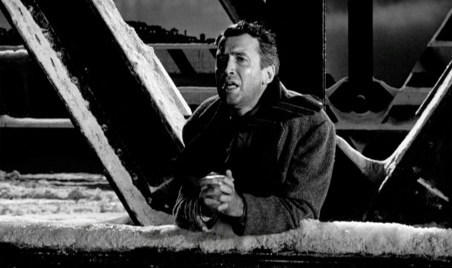
In It’s a Wonderful Life, George Bailey tries to bear the sole burden for the lost money. Instead of asking his friends for help, he tries to commit suicide to cash in his life insurance.
Third Plot Point: Kingdom in Chaos
The Queen’s attempt to protect her children without really assuming responsibility for leading them plunges the Kingdom into Chaos as the Invaders breach the borders.
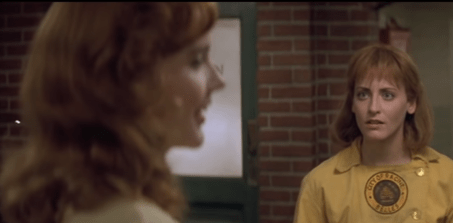
In A League of Their Own, when Dottie’s husband returns, wounded, from the war, she decides to leave the team just before the World Series and go home. She does this in part for Kit, still “mothering” her.
Climax: Releases Her Children, Accepts Her Crown
The Queen accepts that she must trust her children to embark on their own journeys and to play their own parts in protecting the Kingdom under her guidance. She knowingly and willingly leaves behind the Domestic World forever and takes her place as a true leader of the Kingdom.
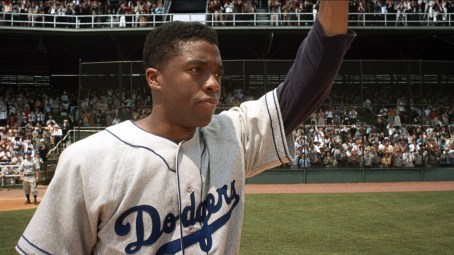
In 42, Jackie Robinson leads the Brooklyn Dodgers into the final game “as a team.”
Climactic Moment: Kingdom Is Saved
Working together, the Queen and her subjects are able to push back the Invaders and once again secure the borders of their Kingdom.
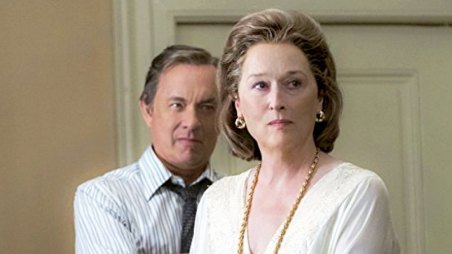
In The Post, newspaper publisher Kay takes control of her “kingdom” by publishing the revelation of a monumental government cover-up.
Resolution: Kingdom Prospers
The King is dead; long live the King. Having completed her arc, the Queen now ascends to the throne. No longer a Parent, she is now a Ruler. But her children are no longer Children; they have grown up as well. The cycle of life continues, and under her wise rulership the Kingdom prospers.

In Return of the King, Aragorn finally takes his throne as King of Gondor, restoring goodness to the realm as he begins his rule.
Examples of the Queen ArcExamples of the Queen Arc include the following. Click on the links for structural analyses.
Elizabeth I in Elizabeth Edna Spaulding in Places in the HeartGeorge Bailey in It’s a Wonderful Life Joan in Joan of ArcHarry Potter in The Order of the Phoenix (among others in the series)Aragorn in The Lord of the Rings Jackie Robinson in 42Maximus in Gladiator Dottie Hinson in A League of Their Own Kay Graham in The PostBob and Helen Parr in The IncrediblesStay Tuned: Next week, we will study the King Arc.
Related Posts:
Story Theory and the Quest for MeaningAn Introduction to Archetypal StoriesArchetypal Character Arcs, Pt. 1: A New SeriesArchetypal Character Arcs, Pt. 2: The Maiden ArcArchetypal Character Arcs, Pt. 3: The Hero ArcWordplayers, tell me your opinions! Can you think of any further examples of stories that feature the Queen Arc? Tell me in the comments!Click the “Play” button to Listen to Audio Version (or subscribe to the Helping Writers Become Authors podcast in Apple Podcast or Amazon Music).
___
Love Helping Writers Become Authors? You can now become a patron. (Huge thanks to those of you who are already part of my Patreon family!)The post Archetypal Character Arcs, Pt. 4: The Queen Arc appeared first on Helping Writers Become Authors.
February 22, 2021
Archetypal Character Arcs, Pt. 3: The Hero Arc
 Ah, the hero. Heroic stories are so important and so prevalent throughout the history of storytelling that the word “hero” itself has become all but synonymous with that of “protagonist.” That the Hero Arc is in fact but one of many important archetypal character arcs does not lessen its importance within the cycle.
Ah, the hero. Heroic stories are so important and so prevalent throughout the history of storytelling that the word “hero” itself has become all but synonymous with that of “protagonist.” That the Hero Arc is in fact but one of many important archetypal character arcs does not lessen its importance within the cycle.
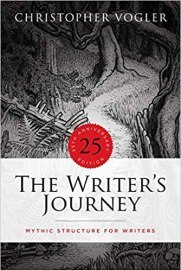
The Writer’s Journey by Christopher Vogler (affiliate link)
The Hero’s Journey came to popular consciousness in the last century with Joseph Campbell’s exploration of the monomyth in The Hero With a Thousand Faces. The ideas in this book were famously utilized to create one of our most influential modern myths—George Lucas’s Star Wars. Later, the ideas would be more explicitly codified as a tool specifically for writers, most notably in Christopher Vogler’s The Writer’s Journey. Writers, viewers, and readers alike have clamorously embraced the Hero’s Journey for the obvious reason that it resonates and resonates deeply.
However, in more recent years, the Hero’s Journey has come under scrutiny for a number of reasons, including:
Over-emphasizing masculine agency at the expense of feminine agency.Creating problematic social narratives around violence, saviorism, and even narcissism.Indicating that it is the only—or at least the best—model for structuring a story.These are all valid criticisms, but I find that most of them arise out of the simple problem that the Hero’s Journey has been asked to hold the spotlight alone, without reference to the other equally vital archetypal character arcs that can be seen to define the human life.
The Hero Arc is primarily a character arc of youthful initiation. Although it can be taken (or re-taken) by people later in life (particularly if they failed to properly fulfill the arc’s lessons in their younger years), the Hero Arc is one of the two “youthful” arcs belonging to the First Act, or approximately the first thirty years, of the human life.
As we discussed last week, the first of these youthful archetypes is that of the Maiden, which is properly a coming-of-age arc that lays the foundation for the independent “questing” of the Hero Arc. The Hero Arc itself then finishes the early initiatory phase of the First Act by asking the protagonist to complete his individuation and reach a level of maturity that allows him to reintegrate with the larger tribe or kingdom as an adult. If the Maiden Arc is about claiming one’s personal power, the Hero Arc is about learning to use that power in service to a greater good. The Hero will arc into the great responsibility of the first of the midlife or Second-Act arcs—that of the Queen—which we will discuss next week.
Once again, before we officially get started, I want to emphasize two important reminders that hold true for all the arcs we’ll be studying.
1. The arcs are alternately characterized as feminine and masculine. This is primarily indicating the ebb and flow between integration and individuation, among other qualities. Together, all six life arcs create a progression that can be found in any human life (provided we complete our early arcs in order to reach the later arcs with a proper foundation). In short, although I will use feminine pronouns for the feminine arcs and masculine pronouns for the masculine arcs, the protagonists of these stories can be of any gender.
2. Because these archetypes represent Positive-Change Arcs, they are therefore primarily about change. The archetype in which the protagonist begins the story will not be the archetype in which he ends the story. He will have arced into the subsequent archetype. The Hero Arc, therefore, is not about becoming the Hero archetype, but rather arcing out of it into the beginnings of the Queen Arc—and so on.
The Hero Arc: Slaying the DragonThe Hero Arc is the story of the conquering champion—the ingenuous but perhaps immodest youth setting out to do a great deed that seems far out of his reach. He does the deed—he slays the Dragon—heals the sick old King—rescues the fair lady—saves the Kingdom. And in the end he does it not for glory but for love.
Throughout his adventures the Hero grows in experience and wisdom. He is often guided by a Mentor, which is the Flat-Arc form of the Mage archetype we will be discussing later on. The Hero is tempted by his own growing power over the material world (sometimes symbolized by actual magical powers), but if he is to successfully avoid falling into the Negative archetypes that constantly shadow him—the Coward and the Bully—he will eventually reach a place of understanding and with it a willingness to sacrifice himself in defense of those whom he loves and who are worthy.
It is interesting that the classic Hero’s Journey is not just about using youthful power to slay the Dragon, but also about returning to the village with the healing elixir. In short: it is love that brings him back.
Stakes: Leaving the Village to Save the Kingdom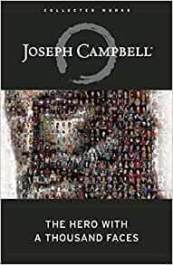
The Hero With a Thousand Faces Joseph Campbell (affiliate link)
The Hero’s Journey is often spoken of synonymously as the Hero’s Quest. It is necessarily defined by some sort of journey, often literal but also sometimes metaphorical. In The Hero With a Thousand Faces, Campbell lists possible ways the “Adventure World” can be presented:
This first stage of the mythological journey—which we have designated the “call to adventure”—signifies that destiny has summoned the hero and transferred his spiritual center of growth from within the pale of his society to a zone unknown. This fateful region of both treasure and danger may be variously represented: as a distant land, a forest, a kingdom underground, beneath the waves, or above the sky, a secret island, lofty mountaintop, or profound dream state; but it is always a place of strangely fluid and polymorphous beings, unimaginable torments, superhuman deeds, and impossible delight.
The young Hero, newly awakened to his individuality and growing independence, is compelled to leave behind his village in order to undertake an important quest. What he will find at the end will ultimately be his own maturity and his ability to now return to the Kingdom. More symbolically, what he will find is the “elixir” that will heal the wounded Kingdom.
The Hero’s departure from his home into (in Obi-Wan Kenobi’s words) “a larger world” is important because it symbolizes his complete and final separation and individuation from the tribe. What follows is his true test and initiation into adulthood—his “spirit quest.” As such, even if he gathers companions on the road, the adventure is one that emphasizes his aloneness (often represented as his “specialness” in some way).

Sacred Contracts by Caroline Myss (affiliate link)
In Sacred Contracts, her book on archetypes, Caroline Myss speaks about this in reference to The Wizard of Oz, which although it has many trappings of a Maiden Arc is obviously a quest story:
Dorothy’s journey takes her to Oz, where the house crashes down and she says famously to Toto, “I have a feeling we’re not in Kansas anymore.” She begins to sense that she has been separated from her familiar environment; that what is going on is happening only to her, not to the tribe; and that she has to find within herself the strength and courage to endure what is coming.
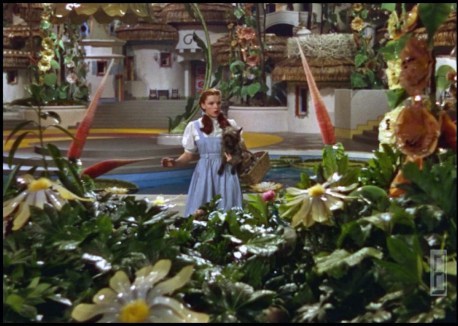
The antagonist in the Hero Arc is almost always externalized. It is something or someone—symbolized as the mindless, greedy, ever-devouring Dragon—that causes unhealth in the Kingdom and creates obstacles between the Hero and his ability to claim the healing elixir.
Campbell famously describes this deeply archetypal initiatory antagonist as the social “status quo” against which the emerging individual must prove he is willing and able to stand:
For the mythological hero is the champion not of things become or things becoming: the dragon to be slain by him is precisely the monster of the status quo: Holdfast, the keeper of the past. From obscurity the hero emerges, but the enemy is great and conspicuous in the seat of power; he is enemy, dragon, tyrant, because he turns to his own advantage the authority of his position. He is Holdfast not because he keeps the past but because he keeps.
Although the Hero may begin the story already chafing against his tribe’s stultifying confines (the poisonous effects of Holdfast), he will usually be at least somewhat reluctant to fully undertake his Quest. We speak of this as the Refusal of the Call—a beat that follows the Inciting Event halfway through the First Act. This refusal, whether represented by the Hero’s own reluctance or someone else’s on his behalf, is always an emphasis of all the reasons the Hero might be better off not taking up the challenge of becoming a fully individuated and independent adult. Campbell points out:
…beyond the protection of his society [is] danger to the member of the tribe.
As illustrated potently in Sam Raimi’s Spider-Man:
With great power comes great responsibility.

In many ways, that is a succinct summary of the challenges of every Hero Arc.
Theme: Resolving the Need for Power and the Need for LoveAs an emerging adult, the Hero is on the brink of discovering his great power. This discovery is vital to his maturation, but it is also a dangerous challenge. The Hero’s power, should it ever grow unchecked, will be as great a threat to his own Kingdom as is ever the Dragon he now faces.
Therefore, the deep internal challenge of the Hero Arc is about reconciling his need and ability for power with his need and ability for love. As he grows in power throughout the journey, he will be given many opportunities to use it in his own favor and at the expense of others. If he is to positively complete his initiation into true and mature adulthood, he must face his own inner dragons and grow into the even more potent (and frightening) power of love.
Myss writes of the inner journey of the Hero:
The Hero is … a classic figure in ancient Greek and Roman literature, often portrayed as one who must confront an increasingly difficult path of obstacles in order to birth his manhood…. In the classic Hero’s Journey, as defined by Joseph Campbell and others, an individual goes on a journey of initiation to awaken an inner knowing or spiritual power. The Self emerges as the Hero faces physical and internal obstacles, confronting the survival fears that would compromise his journey of empowerment and conquering the forces arrayed against him. The Hero then returns to the tribe with something of great value to all.
Although the Hero’s manifestation of love is particularly about serving something great and reintegrating into society in order to do so, his love is often represented specifically through a love interest character. This character may be used to teach him about love and, particularly, to demonstrate his capacity to sacrifice for something greater in the end. Although the “damsel in distress” trope is widely criticized these days for contributing to a flawed social narrative, it’s worthwhile to understand that, as with all stories, the archetypal underpinnings specifically represent different aspects of a single psyche. In other words, within our own Hero Arcs in our own lives, we can recognize that the damsel we, as Hero, rescue is in fact just another part of ourselves.
Key Points of the Hero ArcFor easy reference and comparison, I will be sharing some scannable summations of each arc’s key points:
Hero’s Story: A Quest.
Hero Arc: Individual to Protector (moves from Normal World to Adventure World)
Hero’s Symbolic Setting: Village
Hero’s Lie vs. Truth: Complacency and/or Recklessness vs. Courage
“My actions are insignificant in the overall scope of the world.” versus “All my actions affect those I love.”
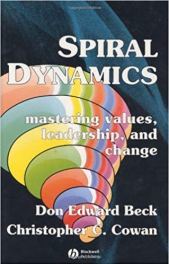
Spiral Dynamics by Don Edward Beck and Christopher C. Cowan (affiliate link)
Hero’s Initial Motto: “I, the powerful.”
(This is via Spiral Dynamics’ “Red” Meme. If you’re not familiar with Spiral Dynamics, this probably won’t mean anything, but I was fascinated to realize that the six positive archetypal arcs line up perfectly with the “memes” of human development as found in the theory of Spiral Dynamics.)
Hero’s Archetypal Antagonist: Dragon
Hero ’ s Relationship to Own Negative Shadow Archetypes:
Either Coward finally uses his Strength because he learns to Love and wants to defend what he loves.
Or Bully learns to submit his Strength to the service of Love.
Hero’s Relationship to Subsequent Shadow Archetypes as Represented by Other Characters: Rescues Snow Queen or releases Sorceress with his love.
The Beats of the Hero Character ArcFollowing are my proposed structural beats for the Hero Arc. I am using allegorical language in keeping with the tradition of the Hero’s Journey (and honestly because it’s so powerful). However, it is important to remember that the language is merely symbolic. Just as the Hero need not actually be a “hero” in any sense, neither do any of the other mentioned archetypes or settings need to be interpreted literally.
This is merely a general structure that can be used to recognize and strengthen Hero Arcs in any type of story. Although I have interpreted the Hero Arc through the beats of classic story structure, it doesn’t necessarily have to line up this perfectly. A story can be a Hero Arc without presenting all of these beats in exactly this order. For the most part what follows is in line with Campbell’s (and Vogler’s) traditional Hero’s Journey—because if it ain’t broke, why fix it, right?
1st ACT: Normal WorldBeginning: Complacent But Unfulfilled
The Hero is a relatively mature young adult. He has awakened to his own adulthood and taken his place among the other adults in his village, but he chafes against the normality of it all. He has yet to try his wings or gain any real experience in the wider world. Before him stretches an unending road in which his life seems mapped out for him as he follows faithfully in the footsteps of all those who have come before.
And yet he does not choose to leave. He does not quite know how to leave, and deep down in the remnants of his Child heart, he retains fears of what it would mean to step beyond the comparative safety of his Normal World. This too, however, is an illusion, because all is not well in the Kingdom. Even if the blight has not yet reached his particular village, rumors abound—the Dragon is threatening.

In Star Wars: A New Hope, Luke Skywalker pines for a more exciting life, away from his uncle’s farm. He says he “hates” the Empire but feels little of its effects and isn’t yet motivated to personally face its oppression.
Inciting Event: Call to Adventure
Then—for what might seem like the first time in the Hero’s entire life—something happens. A stranger comes to town or the Hero makes a strange discovery. Though his tribal training and his fellow villagers tell him to leave it alone, his curiosity gets the better of him. He engages himself with this new occurrence in an irrevocable way. He may act thoughtlessly with no real intent of getting involved, but he soon realizes he is involved. He is presented with a Call to Adventure that suggests he must go out on the road to complete an important quest in service to the Kingdom’s great need. For one reason or another, he attempts to reject this Call. The complacency of “what has always been” tries to keep him in the village.
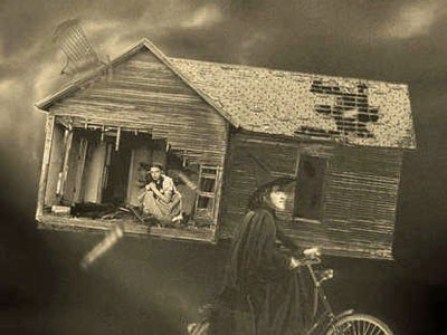
In The Wizard of Oz, Dorothy is swept up in a tornado, which carries her “over the rainbow” to her Adventure World in Oz.
2ND ACT: Adventure WorldFirst Plot Point: Crosses the Threshold
But he does not stay—he cannot. The blight reaches the village in an undeniable way. The Kingdom’s problems cease to be theoretical and become irrevocably personal to the Hero. It may be that someone he loves is injured or killed, or the village itself comes under attack. Whatever the case, the Hero walks through a Door of No Return—crosses its threshold—and leaves behind his village.
The adventure he has always craved has now begun. Even if he bears great sorrow for whatever catalyst forced him from the village, a part of him will be excited by the prospects that now await him. He feels his power growing within, and he begins to explore himself beyond the limitations the village always set upon him. His intentions in aiding the Kingdom are good—pure-hearted—but his understanding of power dynamics is immature. He has no idea what he is getting himself into as he slowly begins to adopt the identity of Hero.
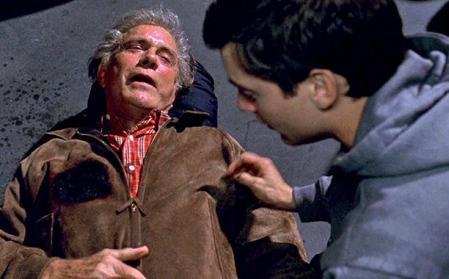
In Spider-Man (2002), Peter’s life is radically changed when he witnesses (and is partially responsible for) his beloved uncle’s murder.
First Pinch Point: Motives and Actions Questioned: “Who Do You Think You Are?”
He is brought up against his own limitations when his hubristic actions receive push-back from others. Mentors, allies, and love interests may caution him or express concern over his heedless actions. But he will also likely receive some sort of check from the antagonist or the antagonist’s proxies.
All of his motives and actions up to this point in the quest are put under scrutiny. He is asked, contemptuously, “Who do you think you are?”
The truth is, he thinks himself quite a lot—a Hero, thank you very much. But this setback forces him to contemplate a different answer. The truth is he doesn’t know who he is at all. He’s not really a Hero. So far, he’s just been playing at being one.

In Treasure Planet, Jim feels he failed after a crew member ostensibly dies because of him. Everyone, including himself, questions the progress he has made aboard ship.
Midpoint: “Remembering” Who He Is
The doubts raised in the previous beat come to a head as the Hero opposes the antagonist in a significant way. The outcome is ambiguous—in some ways a defeat, in others a victory. But most importantly, it offers a Moment of Truth that gives him great insight into both how he might more effectively oppose the antagonist in the external conflict, but also a glimpse into the glorious truth of his own identity.
He is a Hero. He is an individual. He is powerful. He glimpses his true potential and begins claiming his true power.
But he hasn’t yet conquered his shadows. A tendency toward grandiosity remains, along with the subtle lure of absolute power’s many temptations. Even as those he loves applaud his growing heroism, their doubts remain. The good-hearted boy who started this quest is growing into a powerful man. How he will ultimately use that power remains yet to be seen.

In Thor, the Midpoint functions to dramatically remind the protagonist of his hubris and that “who he is” is not currently worthy to raise his own hammer Mjolnir.
Second Pinch Point: Betrayal: “It’s All Your Fault”
The Hero experiences a betrayal of some sort by someone he trusted—whether an ally or an enemy in disguise. Despite all his good intentions, he is blamed for a setback in the quest to obtain the elixir. This accusation may be without merit but may instead be the result of someone else’s resentment toward his carelessness or arrogance earlier in the quest. Or it may indeed be the direct result of his own culpable mistake. Regardless, it is a blow that both sets back his pursuit of the elixir and forces him into a deeper contemplation of his own values.
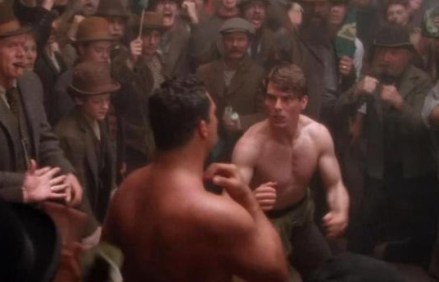
In Far & Away, Joseph loses the boxing match trying to protect Shannon, and their crime-lord boss fires them, casting them out onto the street.
3rd ACTFalse Victory: Means, Not Ends
As stakes rise in the Kingdom’s plight, the Hero executes a desperate gambit to finally defeat the Dragon and steal away the elixir. He gains a victory but compromises all he has learned so far in order to do it. He chooses false means in order to achieve his end—and the victory rings hollow as a result.

In The Hunger Games, Katniss embraces the lie that she is romantically involved with Peeta in hopes they both can win—only to have the hope reversed later on.
Third Plot Point: All Is Lost
As a result of his own mistake, the Hero suffers a great loss or wound. It seems all is lost. Death is everywhere. The Hero may lose someone he loves, either directly as a result of his mistake or because this person sacrifices themselves to correct the problem. It is also possible the Hero may literally or symbolically pay for his mistake with his own life.
Regardless how the symbolism manifests, he is forced to confront a life and death choice—probably literally but certainly internally. He must choose whether he is willing to let die the immature, power-hungry boy he once was. The time has come when he must once and for all face the choice between power and love—so that he might integrate them.
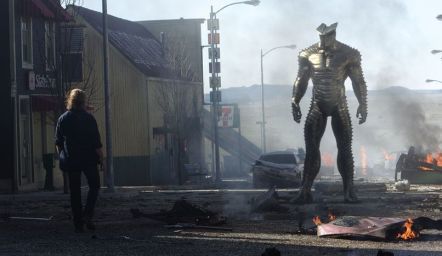
Thor sacrifices himself to his brother’s wrath in order to save others, and he seemingly dies.
Climax: Resurrection
Because this is a Positive-Change Arc, the Hero will choose rightly. He will choose life, and he will choose love. Symbolically (and in some stories literally), he will resurrect. The battle seemed irrevocably lost, but as he rises, so the tide turns. The death he faced in the previous beat was not one he faced willingly, but having embraced finding meaning in sacrifice for the greater good of those he loves, he now faces the possibility of true death willingly.
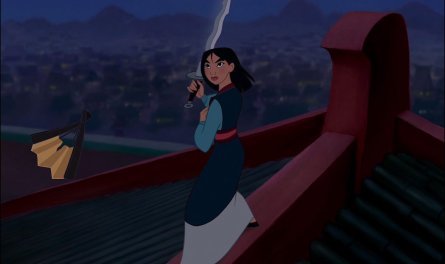
In Mulan, the protagonist “resurrects” into her true identity as both a woman and a warrior in order to confront the antagonist in the Climax.
Climactic Moment: Dragon Vanquished
The Hero’s inner transformation represents the symbolic destruction of the Dragon’s presence as tyrannical power. But the Hero must still defeat the Dragon literally, removing the blight from the Kingdom either directly or by subsequently claiming his reward of the elixir. It is always possible the Hero might indeed give his life and die to achieve this end. But traditionally, since this archetype is not the end of the larger story, the Hero will emerge triumphant.
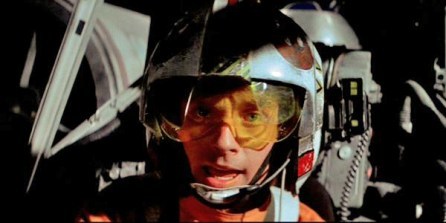
Luke Skywalker destroys the Death Star.
Resolution: Kingdom at Peace
He returns to restore the Kingdom with the elixir. He may return to his village, ready to truly take his place as an fully initiated adult. But more symbolically, he will be elevated to a new rank and take on greater responsibility in helping to run the Kingdom itself.
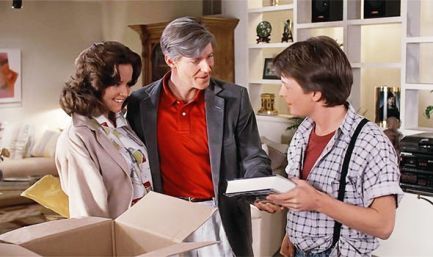
At the end of Back to the Future, Marty returns home to discover that his adventures in the past have completely redeemed and “healed” his family.
Examples of the Hero ArcExamples of the Hero Arc include the following. Click on the links for structural analyses.
Luke Skywalker in Star Wars Mulan in Mulan Dorothy Gale in The Wizard of OzPeter Parker in Spider-ManJim Hawkins in Treasure Planet Katniss Everdeen in The Hunger Games Thor in Thor Marty McFly in Back to the FutureJoseph Donnelly and Shannon Christie in Far and AwayMikey in The GooniesEvie in The MummyStay Tuned: Next week, we will study the Queen Arc.
Related Posts:
Story Theory and the Quest for MeaningAn Introduction to Archetypal StoriesArchetypal Character Arcs, Pt. 1: A New SeriesArchetypal Character Arcs, Pt. 2: The Maiden ArcWordplayers, tell me your opinions! Can you think of any further examples of stories that feature the Hero Arc? Tell me in the comments!Click the “Play” button to Listen to Audio Version (or subscribe to the Helping Writers Become Authors podcast in Apple Podcast or Amazon Music).
___
Love Helping Writers Become Authors? You can now become a patron. (Huge thanks to those of you who are already part of my Patreon family!)The post Archetypal Character Arcs, Pt. 3: The Hero Arc appeared first on Helping Writers Become Authors.
February 15, 2021
Archetypal Character Arcs, Pt. 2: The Maiden Arc
 The First Act of the human experience—roughly the first thirty years—may be thought of as a period of Initiation. It is a period of integrating the parts of one’s self. In many ways, it is a period in which the overarching, symbolic antagonist may be thought of as Fear. We use the arcs of this period to overcome Fear and discover our own empowerment as individuals within the world.
The First Act of the human experience—roughly the first thirty years—may be thought of as a period of Initiation. It is a period of integrating the parts of one’s self. In many ways, it is a period in which the overarching, symbolic antagonist may be thought of as Fear. We use the arcs of this period to overcome Fear and discover our own empowerment as individuals within the world.
As with all of the three periods that encompass these archetypal “life arcs,” the First Act is made up of two partner arcs, each leading into the other, each vitally important to mature development. The second of these arcs is perhaps the most popularly known of any archetypal character arc—the Hero. But the Hero Arc cannot successfully launch the youthful person into adulthood unless it is founded upon the lessons learned from a completed Maiden Arc.
Because the Hero Arc is told almost to the complete exclusion (at least consciously) of the other life arcs—particularly the feminine and “elder” arcs—we don’t find a wealth of study in writing these other arcs, which is a deep shame since it means that both society and the individual misses out on the guidance of stories from other equally vital parts of life. It also means writers often feel they have but one primary model upon which to build stories. Instinctively, I think we all reject this—and yet where are the other models?
The answer is that at least some of them are now arising (or rather reemerging). The feminine arcs in particular are beginning to find voices. Within the last half century, more and more writers, psychologists, and social historians are offering models for these under-explored female arcs. I want to quickly reference some of these to indicate where I believe their models line up with the six life arcs. Some of these books were written for writers, some not.
First, we have Maureen Murdock’s The Heroine’s Journey—which I see as basically a female perspective on the Hero Arc.
The Heroine’s Journey by Maureen Murdock (affiliate link)
In her book 45 Master Characters, Victoria Lynn Schmidt presents her own take on essentially the same approach as Murdock’s.
45 Master Characters by Victoria Lynn Schmidt (affiliate link)
Recently, paranormal romance author Gail Carringer wrote a book also titled The Heroine’s Journey. I see her discussion lining up nicely with the Queen Arc, which we’ll be exploring later in the series.
The Heroine’s Journey by Gail Carringer (affiliate link)
And finally, and more to the point of this specific post, screenwriter Kim Hudson examines the feminine counterpart to the Hero’s Journey, which she calls The Virgin’s Promise.
The Virgin’s Promise by Kim Hudson (affiliate link)
Aside from attributing some of the sources I’ve found invaluable in studying this subject, I highlight this primarily to indicate that there are different feminine arcs just as there are different masculine arcs. It’s also worth noting that there is often crossover in the models of these archetypal arcs and sometimes even in the arcs themselves. This is not an exact science. What I’m presenting in this series is simply my take on the subject—what I’ve found rings true for me in my own life’s journey and in writing my characters’ journeys. As ever in all things story theory, you should always heed your own instincts (which understand archetypes much more deeply than any of our rational minds do anyway) in reconciling any parallels or inconsistencies.
Now before we officially get started, I want to include two important reminders, which hold true for all of the arcs we’ll be studying.
1. The arcs are alternately characterized as feminine and masculine. This is primarily indicating the ebb and flow between integration and individuation, among other qualities. Together, all six life arcs create a progression that can be found in any human life (provided we complete our early arcs in order to reach the later arcs with a proper foundation). In short, although I will use feminine pronouns for the feminine arcs and masculine pronouns for the masculine arcs, the protagonists of these stories can be of any gender.
2. Because these archetypes represent Positive Change Arcs, they are therefore primarily about change. The archetype in which the protagonist begins the story will not be the archetype in which she ends the story. She will have arced into the subsequent archetype. The Maiden Arc, therefore, is not about becoming the Maiden archetype, but rather arcing out of it into the beginnings of the Hero Arc—and so on.
The Maiden Arc: Coming of AgeThe Maiden Arc is the fundamental coming-of-age story. It is the story of a character who has left behind the Child archetype (which we will discuss later in the series when we reach the Flat-Arc or “resting” archetypes), but who has not yet individuated away from her family and into her own autonomy.
The Maiden represents sexual awakening and conscious burgeoning. Hers is that fraught period—recreated in so many YA novels—when the person is learning who she will become and, perhaps most poignantly, what she is willing to risk to become that person.
There is no guarantee she will accept the risk. As with all of the arcs, there is no promise she will fully commit to and complete her arc. Although we all grow up physically and assume adult responsibility, the inner arc may remain uncompleted long into our lives. The obstacles the Maiden confronts are vast because true individuation is often perceived as a threat by the tribe in which she exists.
Stakes: Individuating From the TribeBecause the Maiden is so young—just on the cusp of adulthood—she will still be perceived as a Child by her tribe. This is why, symbolically, the tribe is usually represented by her own family in some way. Symbolically, she has not yet ventured beyond the walls of her home. But that home, which once seemed to be all the world, is beginning to seem very small. And the love of the parents, which once seemed so all-fulfilling, now begins to seem confining to her growth.
In The Virgin’s Promise, Kim Hudson introduces the primary dilemma of the First-Act arcs by saying:
Virgins and Heroes are symbols for the universal need to stand on your own…. Each time a social organization places someone at odds with their true nature, the Virgin archetype provides guidance towards becoming authentic.
Inherent in this dilemma we find the stakes of the Maiden Arc. The childhood life she has so far led is no longer proving to be “enough” for her—and so she must find the courage to risk giving it all up in some way (if only symbolically) in order to grow up.
Antagonist: Facing the Predator and/or the Too-Good MotherI absolutely love Hudson’s structural presentation and highly recommend her book. However, the beat sheet I’m offering for the Maiden Arc (below) varies from Hudson’s Virgin’s Journey. Partly this is for the sake of variety and because I wish to encourage people to read Hudson’s excellent work, but also it is because I believe there is room within the concept of the Maiden Arc for several very important archetypal antagonists, which Hudson does not directly discuss.
These antagonists are the Predator, the Too-Good or Devouring Mother, and the Naïve Father. Although any of these may be literally represented within the story (and often are in fairy tales and fantasy), they can also be symbolically represented or can be presented for what they truly are: psychic aspects of the Maiden herself.
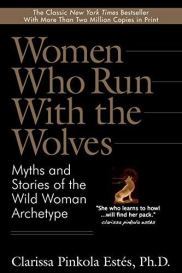
Women Who Run With the Wolves by Clarissa Pinkola Estes (affiliate link)
The Predator, representing a toxic animus or masculine force within the Maiden, is the part of her, whether externally represented in the conflict or not, that would destroy her from within, blocking her consciousness, her individuation, and her true empowerment. In analyzing the classic Bluebeard story (about a Maiden who marries an older man and discovers all his previous wives murdered in a locked room) as symbolic of the Predator in her book Women Who Run With the Wolves, Clarissa Pinkola Estés says:
Perhaps most important, the Bluebeard story raises to consciousness the psychic key, the ability to ask any and all questions about oneself, about one’s family, one’s endeavors, and about life all around. Then, like the wildish being who sniffs things out, a woman is free to find true answers to her deepest and darkest questions. She is free to wrest the powers from the thing which has assailed her and to turn those powers which were once used against her to her own well-suited and excellent uses. That, is a wildish woman.
Although, again, the symbolic possibilities are endless, the Predator is often represented as a destructive or devouring force apart from the parents or authority figures—and yet one to which, for “perfectly good” reasons the parents often sacrifice the Maiden. Estés also comments on both the Too-Good Mother and the Naïve Father, from whom the Maiden must individuate in order to escape the Predator (and, again, these are fundamentally internal antagonists within the Maiden herself, even if they are represented externally within the conflict):
To gain a little distance from the sweet blessing of the too-good mother, a woman gradually learns to not just look, but to squint and to peer, and then, more and more, to suffer no fools…. But, in a woman’s psyche, even though the father bumbles into a lethal deal because he knows nothing of the dark side of the world or the unconscious, the horrible moment marks a dramatic beginning for her; a forthcoming consciousness and shrewdness.
One of my favorite examples of some of these archetypes is in the Cinderella adaptation Ever After, in which the protagonist is literally sold to a predatory old man because her naïve father married her devouring step-mother.

Another amazing example comes from the original Terminator movie, which in so many ways is a symbolic representation of the feminine journey to power—externally representing both her inner Predator and Protector. She eventually internalizes the Protector’s power and destroys the Predator.
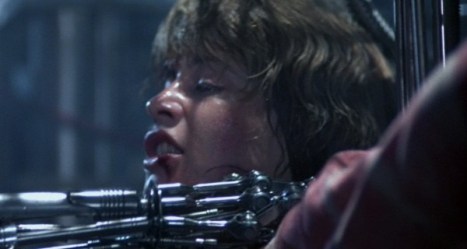
Although you may choose to represent the stakes in a Maiden Arc as life or death (as in Terminator), they are most literally represented within quiet coming-of-age stories that are simply about growing up. The challenge of the Maiden Arc is whether or not the protagonist will awaken to and accept her potential, power, and responsibility as an individual.
This may be represented by a character who is literally a child on the cusp of adolescence such as Walter in Secondhand Lions.

Or it may be represented by an adult who rejected this initiatory challenge at the proper time in his own life, such as the protagonist in Nick Hornby’s About a Boy.
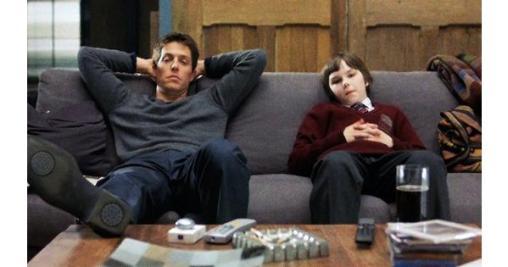
The Maiden’s story is foundationally one of a fight to empowerment. But whatever the external forces may be, it is foremost an internal struggle—whether the Maiden is willing to let go of the carefreeness of childhood in exchange for the terrible freedom of adulthood. Will she continue to cling to her own ignorance and naïvety, her own blissful lack of consciousness? Will she listen to what Estés calls the Devil?
[The Devil] wants the maiden to obey these tenets: “Don’t see life as it is. Don’t understand the life and death cycles. Don’t pursue your yearnings. Don’t speak of all these wildish things.”
Or will she rise up and confront the truth of Alice Walker’s words?
The most common way people give up their power is by thinking they don’t have any.
If she does rise up, she will be able to complete her arc with the following revelation as spoken by Estés:
These negative complexes are banished or transformed—your dreams will guide you the last part of the way—by putting your foot down, once and for all, and by saying, “I love my creative life more than I love cooperating with my own oppression.”
Indeed, Estés sums up the whole arc:
Key Points of the Maiden Arc…the maiden represents the heartfelt and formerly sleepy psyche. But a warrior-heroine lies beneath her soft exterior. She has the endurance of the lone wolf. She is able to bear the dirt, grime, betrayal, hurt, loneliness, and exile of the initiate. She is able to wander the underworld and return, enriched, to the topside world. Although she may not be able to articulate them when she first descends, she is following the instructions and directions of the old Wild Mother, Wild Woman.
For easy reference and comparison, I will be sharing some scannable summations of each arc’s key points:
Maiden’s Story: An Initiation.
Maiden Arc: Innocent to Individual (moves from Protected World to Real World)
Maiden’s Symbolic Setting: Home
Maiden’s Lie vs. Truth: Submission vs. Sovereignty.
“Submission to authority figures is necessary for survival.” versus “Personal sovereignty is necessary for growth and survival.

Spiral Dynamics by Don Edward Beck and Christopher C. Cowan (affiliate link)
Maiden’s Initial Motto: “We, the clan.”
(This is via Spiral Dynamics’ “Purple” Meme. If you’re not familiar with Spiral Dynamics, this probably won’t mean anything, but I was fascinated to realize the six arcs line up perfectly with the “memes” of human development as found in the theory of Spiral Dynamics.)
Maiden’s Archetypal Antagonist: Authority/Predator
Maiden ’ s Relationship to Own Negative Shadow Archetypes:
Either Damsel finally owns her Potential by embracing her Strength.
Or Vixen learns to wield her true Potential with true Strength.
Maiden’s Relationship to Subsequent Shadow Archetypes as Represented by Other Characters: Inspires Coward or outwits Bully.
The Beats of the Maiden Character ArcFollowing are my proposed structural beats for the Maiden Arc. I am using allegorical language in keeping with the tradition of the Hero’s Journey (and honestly because it’s so powerful). However, it is important to remember that the language is merely symbolic. Just as the Maiden need not actually be a “maiden” in any sense, neither do any of the other mentioned archetypes or settings need to be interpreted literally.
This is merely a general structure that can be used to recognize and strengthen Maiden Arcs in any type of story. Although I have interpreted the Maiden Arc through the beats of classic story structure, it doesn’t necessarily have to line up this perfectly. A story can be a Maiden Arc without presenting all of these beats in exactly this order. Check out some of the previously mentioned resources (especially Kim Hudson’s The Virgin’s Promise) for other interpretations of the Maiden’s beats.
1st ACT: Protected WorldBeginning: Provided For But Unprepared
The Maiden lives still on the border of a seemingly blissful childhood. Even if all is not perfect in the home of her parents, she continues to experience a division between the perceived safety and providence of her childhood home and the dangerous—or at least unknown—world beyond.
But even as a part of her remains complacent in her ignorance of the larger world, change is beginning to stir within her, and this change is reflected outwardly as aspects of the world beyond begin to slowly penetrate and change the Protected World of her childhood.
Up to this point in her life, the Maiden has been following the rules of her world in order to a) be rewarded by having her needs met and b) avoid being punished. But the rules’ requirements are beginning to cause her pain or constriction. The walls that are supposedly there to protect her are in fact preventing her from recognizing or defending herself against the Predator when he shows up.

In Bend It Like Beckham, Jess lives at home with her parents, whom she loves but who do not understand or support her to desire to play soccer (football).
Inciting Event: Predator ’s Proposal
The Maiden’s quiet home world is interrupted by the arrival of a new force from beyond. This force may be obviously a representation of the dangers her parents always warned her she wasn’t capable of confronting. Or it may disguise its danger with a mask of seduction that she is not yet wise enough to perceive. Or this interruptive force may in fact be dangerous not so much literally but symbolically—in that the awakening of the Child into the adult world does indeed risk many dangers—as, for example, when the Maiden falls in love for the first time or is offered a “grown-up” opportunity.
Whatever the case, this “Predator” will at least seem to offer a way out of the restrictive world in which the Maiden is confined. He proposes to her—or to her parents. The Maiden herself isn’t yet wise enough to recognize that the Predator is just a dangerous extension of the same power that rules her Dependent World. As symbolic extensions of her own naïvety, the Too-Good Mother and Naïve Father likewise do not see through the threat and/or are eager to accept the proposal for their own gain and/or at least do not see how to avoid sacrificing their daughter to save themselves.
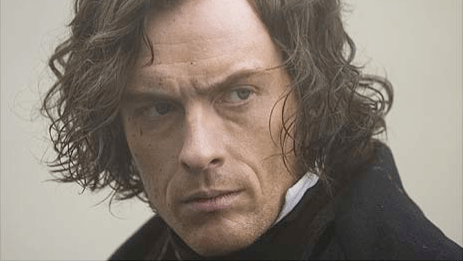
In a Maiden Arc, the love interest can represent the devouring Predator just as often as the Protector. In Jane Eyre, Mr. Rochester rather surprisingly represents the Predator. Even though he is redeemed in the end, he spends most of the story trying to bend Jane to his will in exchange for his love.
2ND ACT: Real WorldFirst Plot Point: Inspired or Compelled to Fit New Identity; Protector Arrives
The Maiden accepts the Predator’s proposal, either out of trust for her authority figures or out of her own true but misguided instinct to move forward into a larger consciousness. Whatever the case, she takes a first and irreversible step out of her childhood Protected World and into the Real World of the adults. In so doing, she spreads her wings for the first time and begins to experiment with new identities and desires.
No longer entirely confined by the rules and protection of her childhood, she dares to explore. As the Predator’s betrothed, she is still playacting, trying on this new role and believing she is maturing without realizing that she is still acting out the beliefs and expectations of others. However, she is also beginning to discover truths about herself: who she was and who she has the potential to become.
At this time, the Protector arrives. This may be in the form of a literal Protector of some kind (often a Hero), but it may also be simply the rising of the Maiden’s own inner Protector—the healthy counterpart of the Predator. Even if a human Protector arrives (and even if he literally rescues her at some point in the story), he is not her savior. Whether a Lover or a Mentor, he represents merely a catalyst to prompt the inner change she herself must enact to reach autonomy.
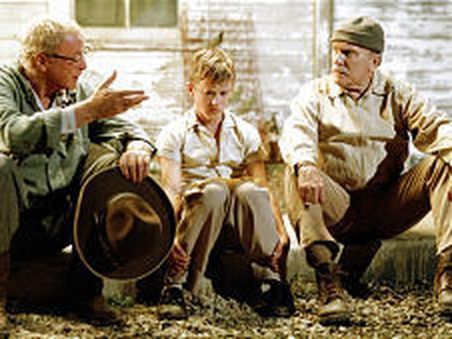
In Secondhand Lions, the young protagonist Walter finds surprising allies in his eccentric and cranky great-uncles, with whom his mother has abandoned him.
First Pinch Point: Predator Sees Through Disguise
The Maiden continues to explore her awakening consciousness into adulthood, but she does so in a sort of shadowland, avoiding the full awareness of those who remain back in her Protected World. Whether she is aware of the Predator’s true and tyrannical nature, or whether she still partly believes in the seductive promise he seems to offer, she is becoming less and less subject to him—and therefore more and more threatened by what he offers.
As she secretly grows away from the identity he has assigned to her, he becomes suspicious and sees through her disguise. He recognizes she is not entirely a guileless, defenseless Maiden any longer but is on the cusp of breaking away from him. He will threaten or punish her in an attempt to bring her back under his power. She is deeply frightened—well aware of all she stands to lose if she departs her Protected World for good.
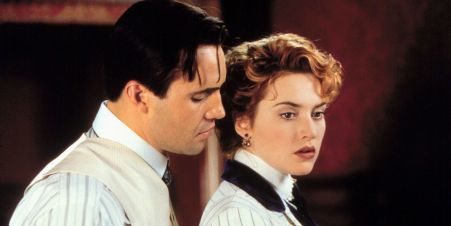
In Titanic, Rose is reminded by both her predatory fiancé Cal and her desperate mother that the good of the “family” depends upon her marriage to a wealthy man whom she does not love.
Midpoint: Identities/Loyalties/Wants Conflict
A Moment of Truth arrives when the Maiden is confronted by the divide that has grown between who she used to be—and still tries to be—in the Protected World and who she is becoming in the Real World. Whether symbolically or literally, she is forced to confront the two realities represented by the Predator and the Protector—and she must choose which identity to internalize for the future. She may do this by allying with an actual person representing the Protector, or merely symbolically by stepping into this role for herself and venturing into the Real World in an irrevocable way. She embraces her emerging self and the exciting Truth of who she has the potential to become, and she demonstrates true responsibility for her own choices in some significant way.
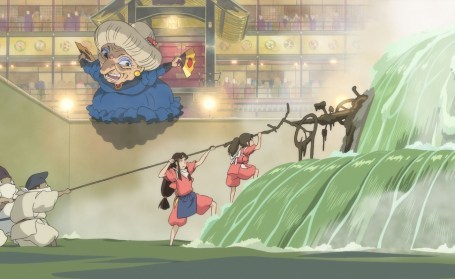
In Spirited Away, Chihiro comes into her own by saving a river spirit. No longer just a clumsy, scared little girl, she proves she can hold her own amongst all the workers and guests at the bathhouse.
Second Pinch Point: Unmasked
Eventually, her choices and actions at the Midpoint are discovered, and she is unmasked. Her new identity fully emerges to everyone back in her Protected World. Whether well-meaning, controlling, or both, the people she has previously relied on are shocked by her transformation. Depending on their own symbolism, they may be alternately threatened, grieved, and/or proud.
Regardless, there are stakes to pay off. The Maiden’s tribe will not fully relinquish her into the Real World without a struggle. There will be people who do not want her to change and leave, and these people will do whatever they can to keep her in the Protected World “for her own good.”

In Ever After, Danielle’s step-family realizes she has been lying about her identity and spending time with the prince. They punish her by locking her in a cellar.
3rd ACTFalse Victory: Bride Price
The Predator returns with a more seductive or threatening offer than ever. He still wants his bride, and he is not willing to lose her. He ups the bride price and/or threatens the Maiden’s family. Those around her beg her to consider what is best for the family that has always protected her. She herself is deeply conflicted. The stakes seem far too high. Can she really sacrifice everything she has ever loved—and perhaps her own survival—for the chance at this true life she has now glimpsed? She begins to think that perhaps this redoubled bride price is worth the exchange.
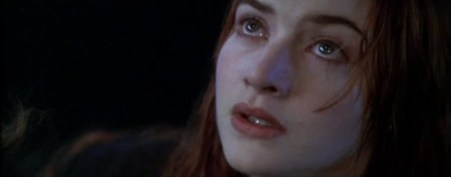
In Titanic, Rose is given the chance to escape the sinking ship on a lifeboat, but only if she will leave Jack to die and return to the restrictive life she hates.
Third Plot Point: Marriage Treaty Threatened, Wanders in Wilderness
The Maiden resists her impending enslavement to the Predator, and the Predator grows more and more threatening. The stakes rise, and her family’s well-being appears to be at stake. Her once seemingly serene Protected World is now in an uproar. She withdraws and “wanders in the wilderness” (Hudson’s term, which I love).
She is caught now between worlds, and she can never go back. Never again can she be the innocent, protected Child she once was. To sacrifice herself to the Predator, as her tribe demands, would be to turn her back on the burgeoning new self she has discovered and doom herself to an imprisoned half life—neither Child nor adult. To throw off the Predator and grow beyond the tribe also demands a sacrifice, but only this death will offer the chance of a rebirth into something new.
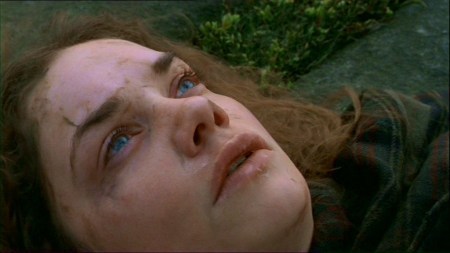
After fleeing her failed wedding to Rochester (when she discovered he was already married), Jane Eyre literally “wanders in the wilderness” to the point she nearly dies.
Climax: Fights Back Against Predator
Even right at the door of the church, the Maiden fights back against her marriage to the Predator. She will not surrender what she discovered. She will not hide her newly won understanding of her own potential, power, and responsibility. She will fight. She will declare herself (in Jane Eyre’s words) “a free human being with an independent will.”
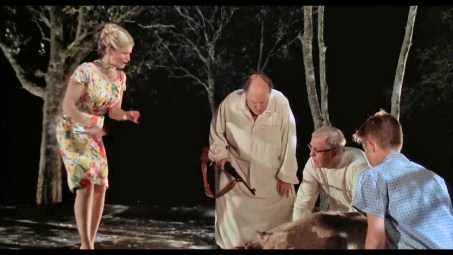
In Secondhand Lions, Walter refuses to help his mother’s abusive boyfriend steal his uncles’ money. He stands up for them and fights back.
Climactic Moment: Comes of Age
And she will triumph. She will overcome the Predator, perhaps with the help of the Protector and others whom she has inspired with her courage and independence, or perhaps alone having internalized their support. If the Predator is truly evil, she will banish him forever from her family’s home. If the Predator is representative only of the overprotective forces that would “devour” her out of misguided love, then she will at least attempt (and likely succeed) to make peace with them. She is an adult now—an equal—and she will treat others as such, receiving from them their respect in return.
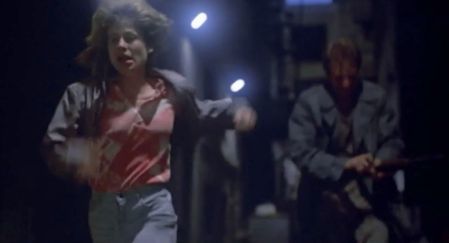
In The Terminator, Sarah watches Kyle (her externalized Protector) die for her. She internalizes his strength and the tactics he has taught her to destroy the Terminator.
Resolution: Kingdom Is Renewed for Another Generation
Restrictive elements (such as the Predator and the Evil Step-Mother) will be cast off and banned from the Kingdom. Other characters, who prove themselves willing to embrace and benefit from the Maiden’s courageous growth, will be renewed. By coming of age, she ensures the tribe will continue into a strong new generation.
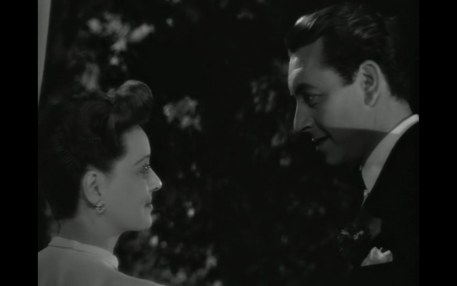
In the classic Bette Davis movie Now, Voyager, she ends triumphantly transformed and ready to nurture the next generation.
Examples of the Maiden ArcExamples of the Maiden Arc include the following. Click on the links for structural analyses.
Danielle in Ever After Will in About a Boy Walter in Secondhand Lions Sarah in The Terminator Jane in Jane Eyre Charlotte in Now Voyager Edward in Edward Scissorhands David in (the first part of) David CopperfieldJess in Bend It Like BeckhamJaved in Blinded by the LightAmy in Little Dorrit Chihiro in Spirited Away Rose in TitanicStay Tuned: Next week, we will study the Hero Arc.
Related Posts:
Story Theory and the Quest for MeaningAn Introduction to Archetypal StoriesArchetypal Character Arcs, Pt. 1: A New SeriesWordplayers, tell me your opinions! Can you think of any further examples of stories that feature the Maiden Arc? Tell me in the comments!Click the “Play” button to Listen to Audio Version (or subscribe to the Helping Writers Become Authors podcast in Apple Podcast or Amazon Music).
___
Love Helping Writers Become Authors? You can now become a patron. (Huge thanks to those of you who are already part of my Patreon family!)The post Archetypal Character Arcs, Pt. 2: The Maiden Arc appeared first on Helping Writers Become Authors.




